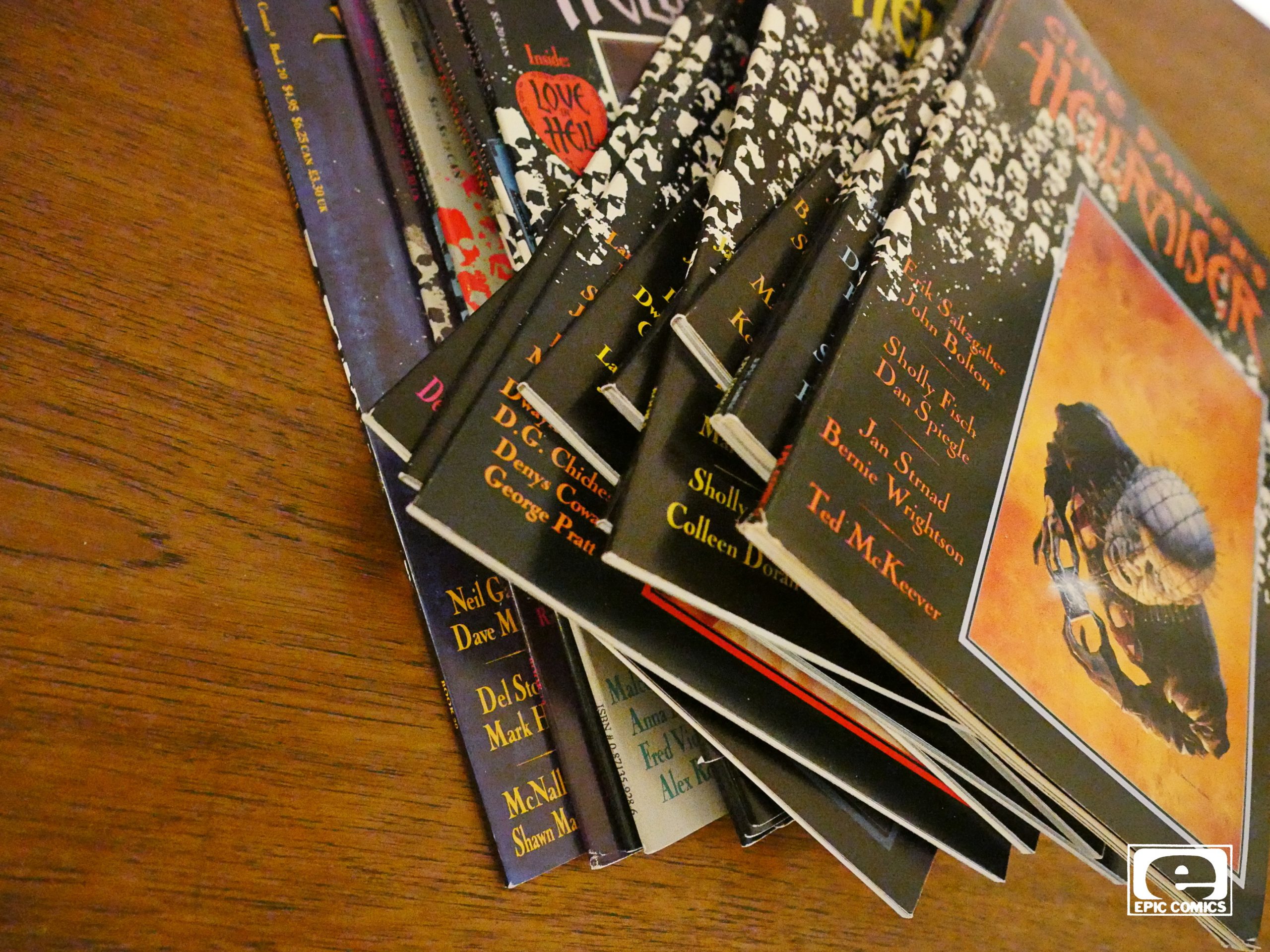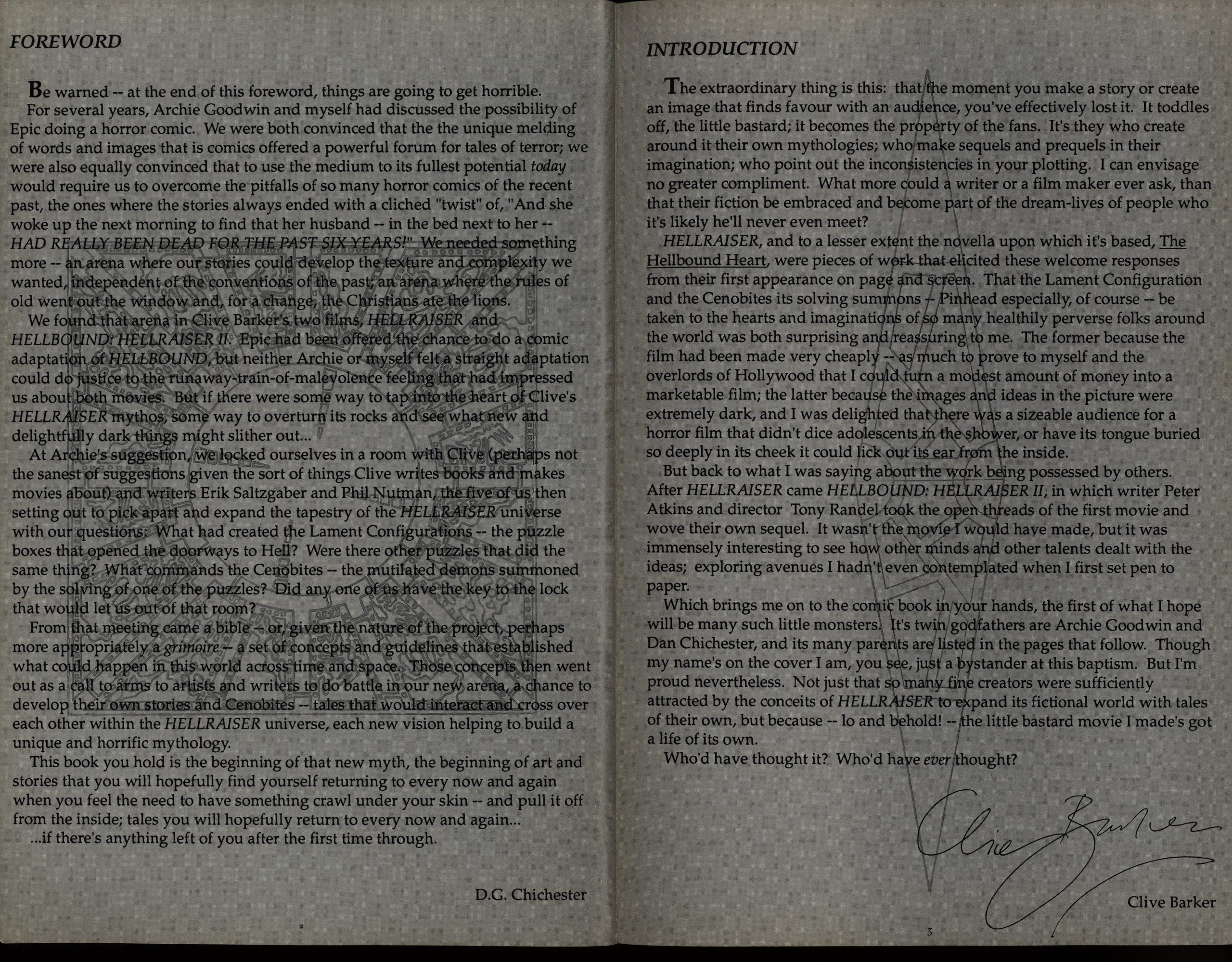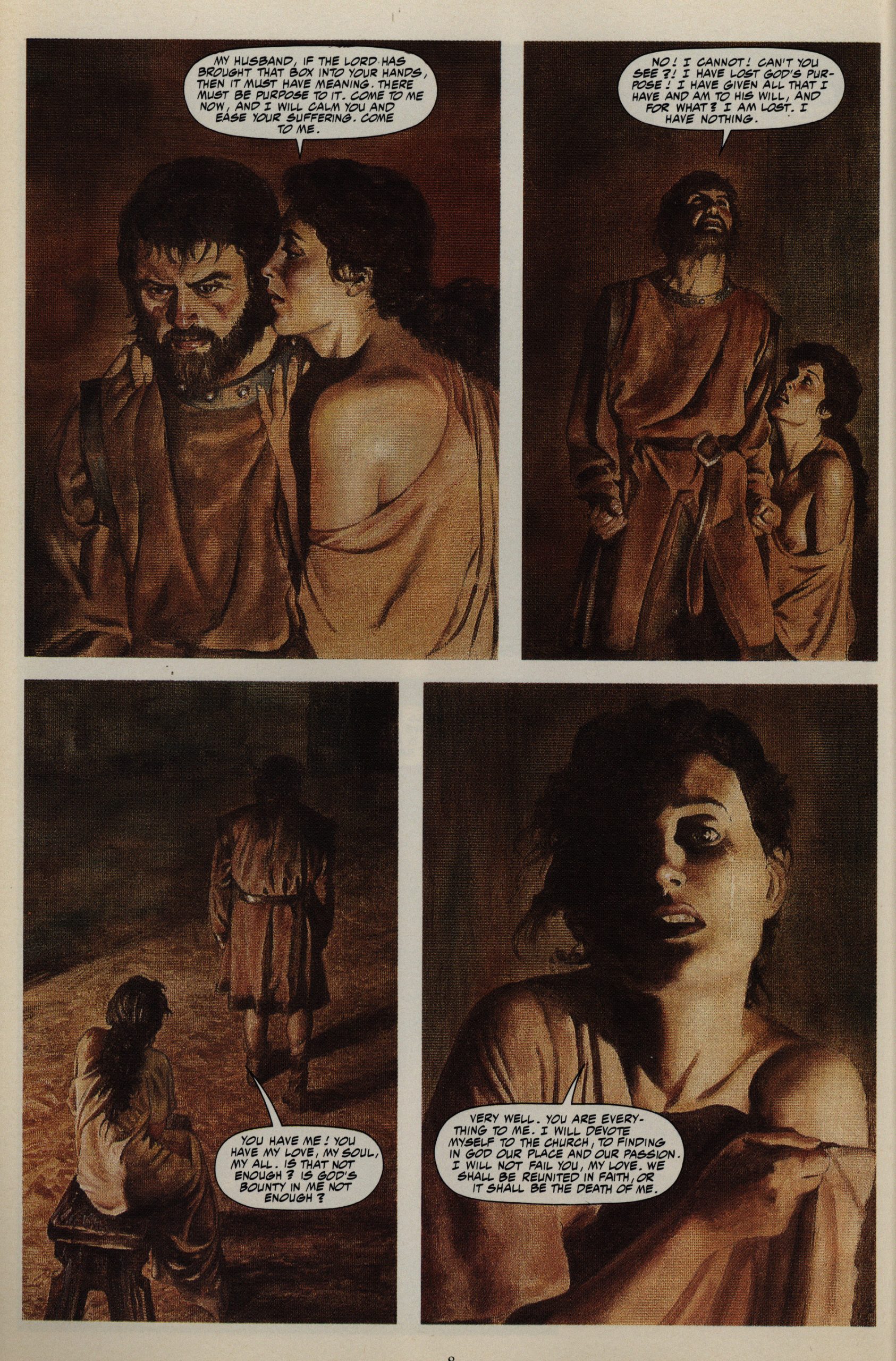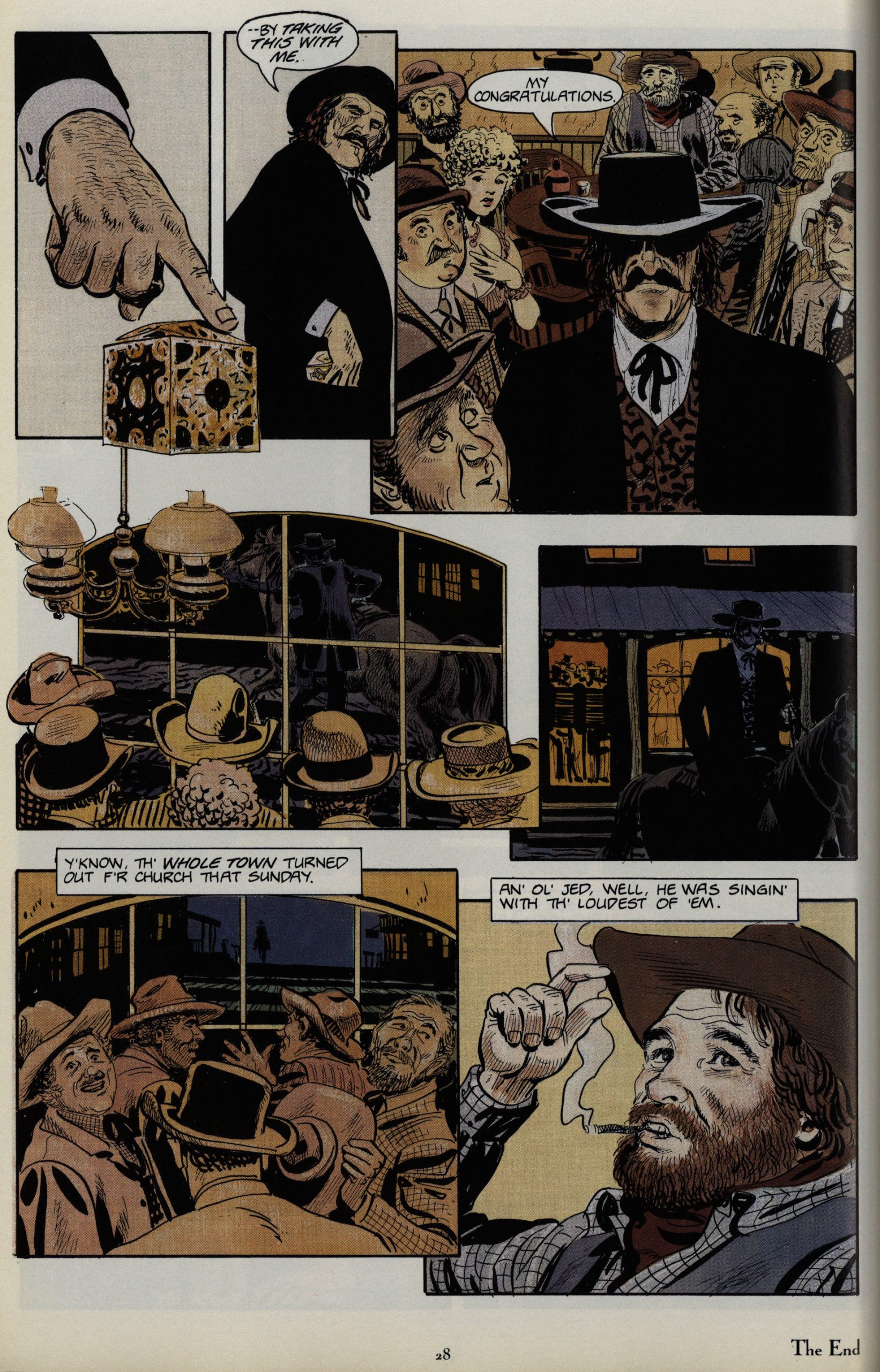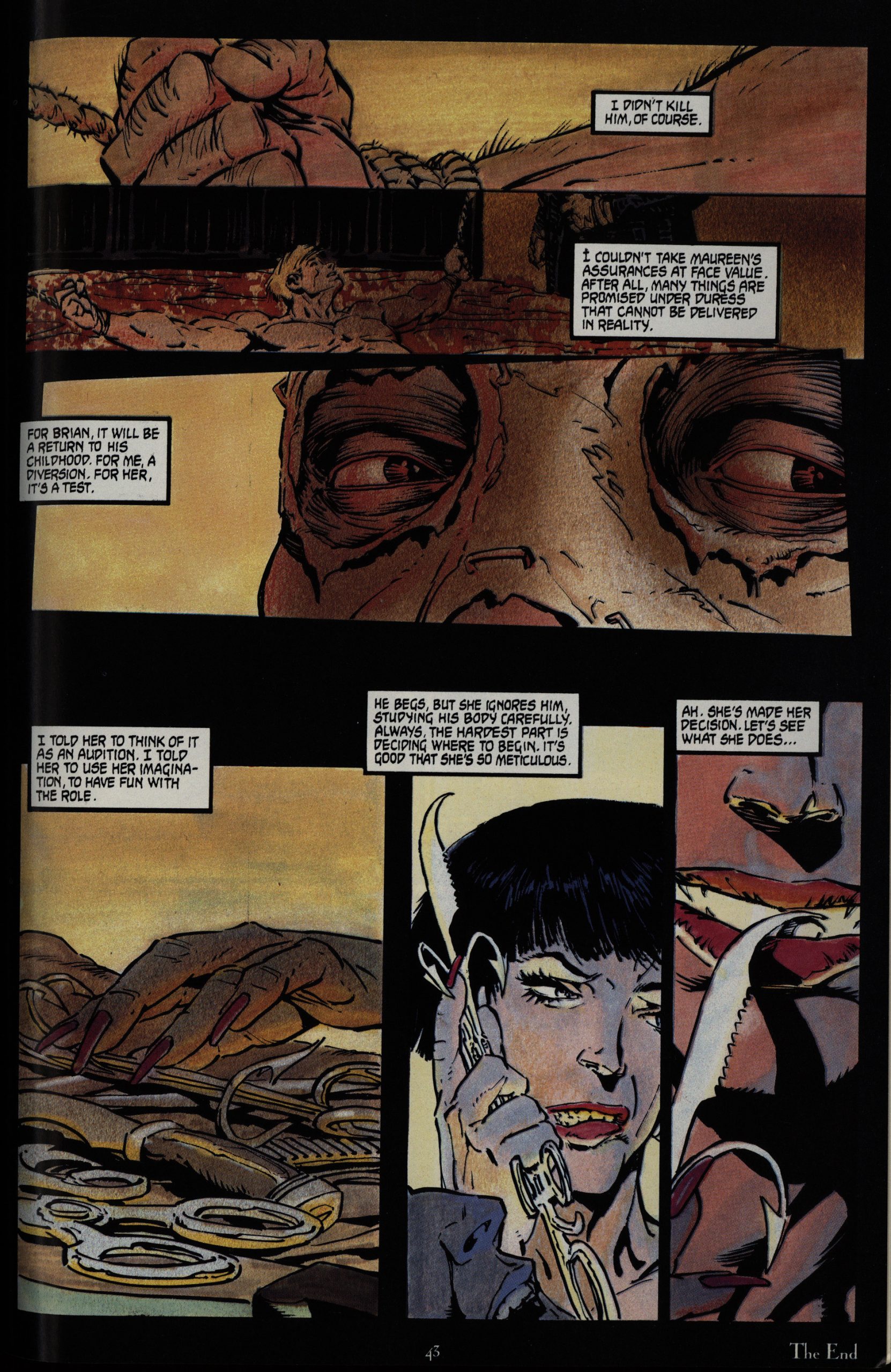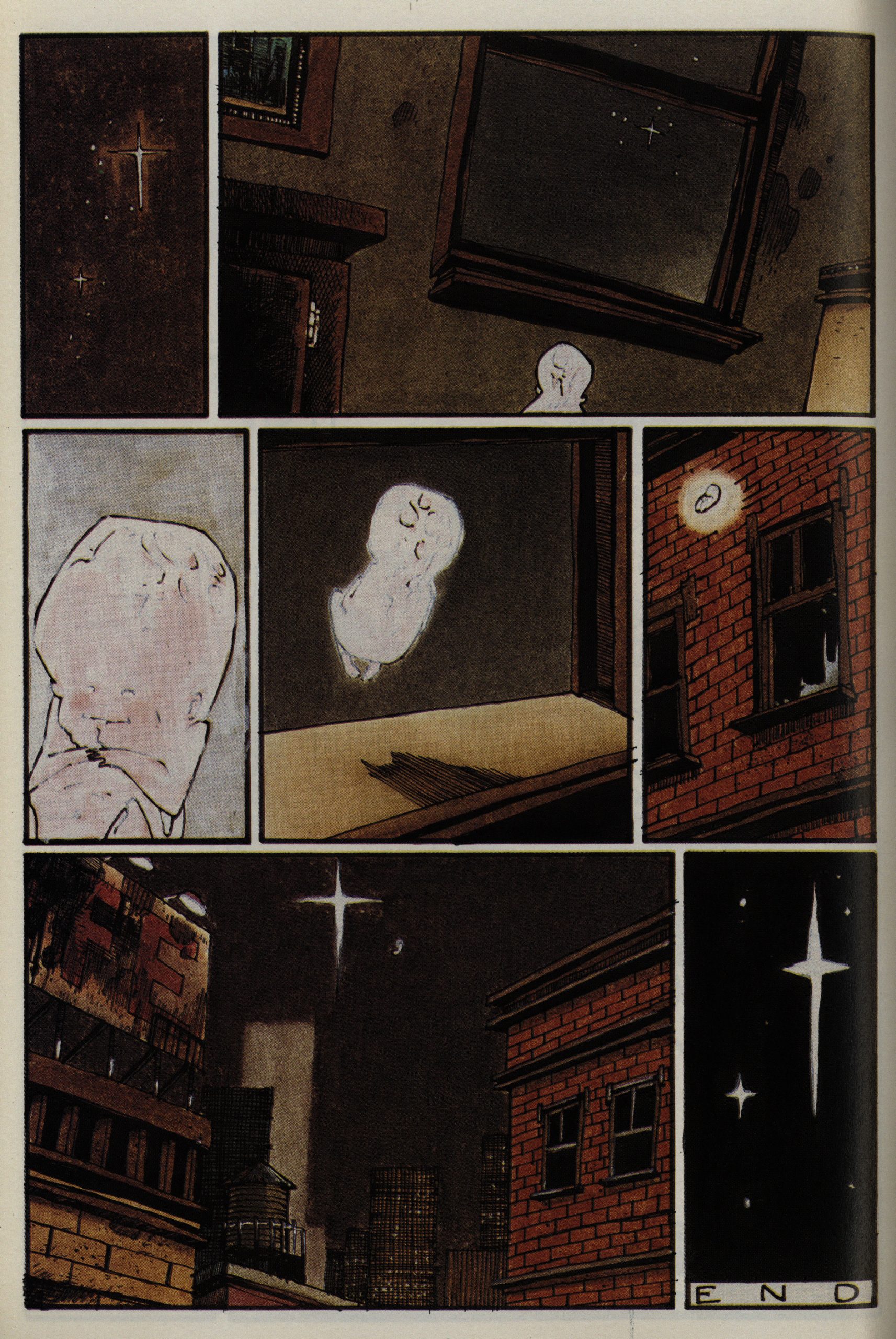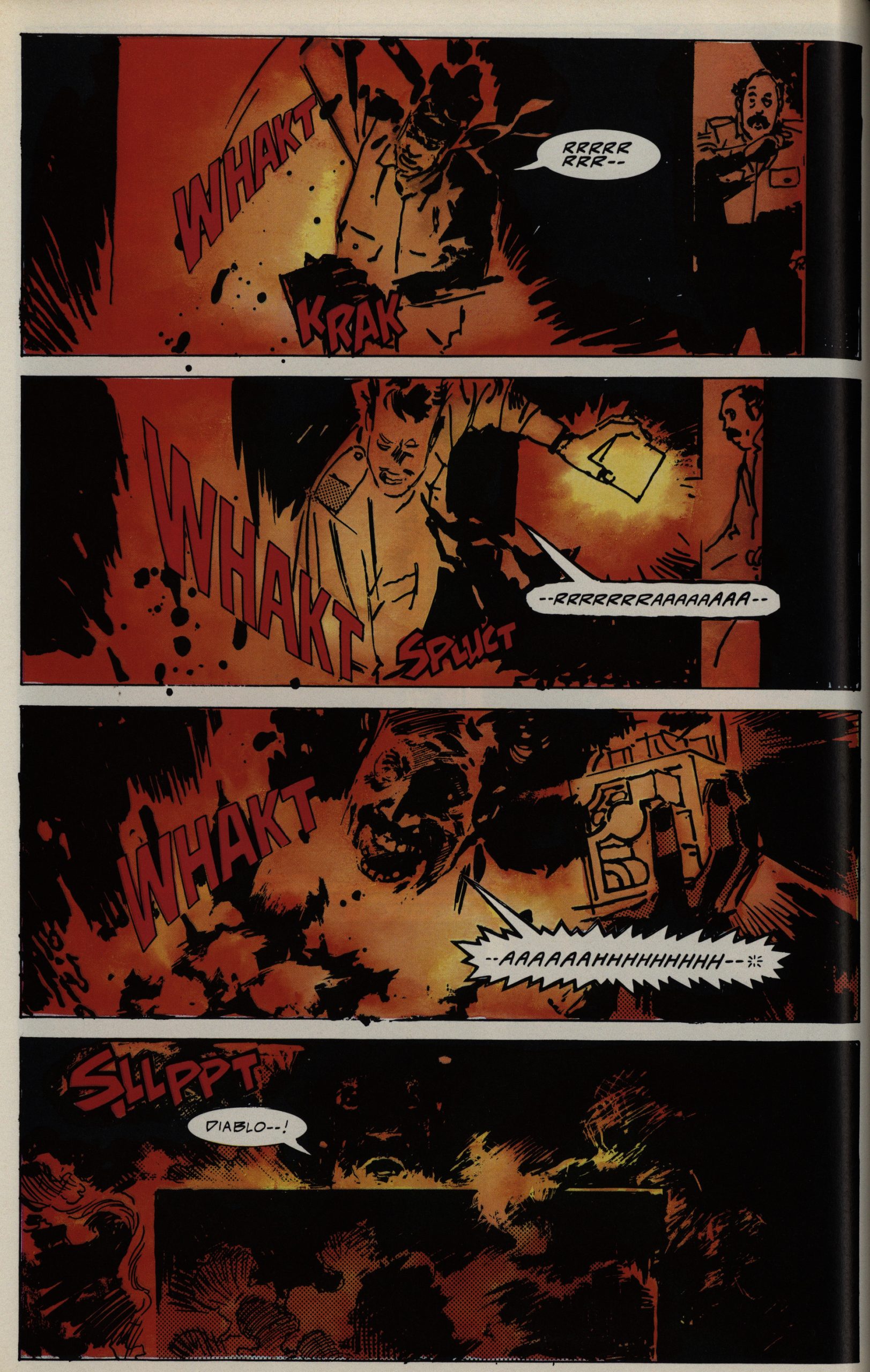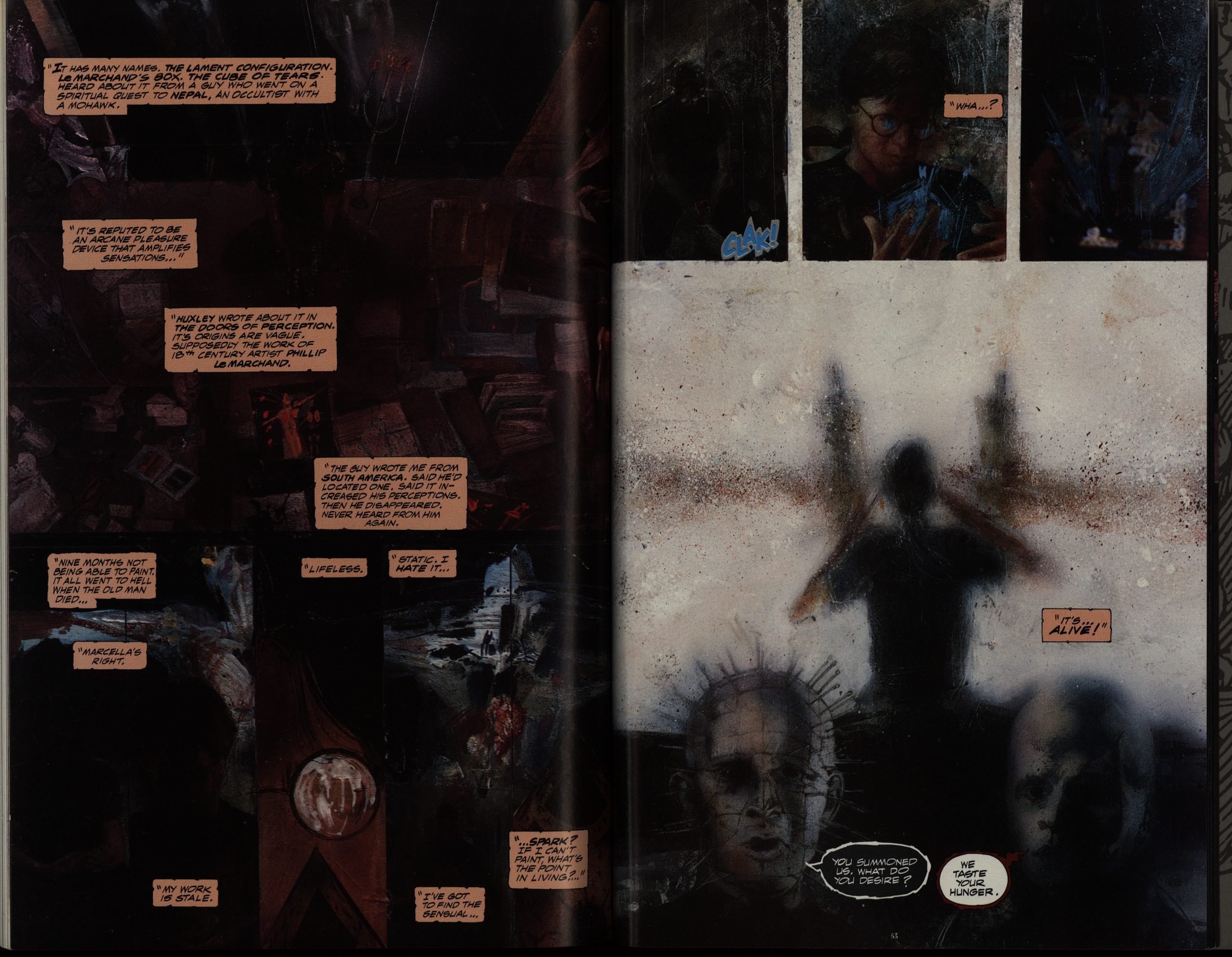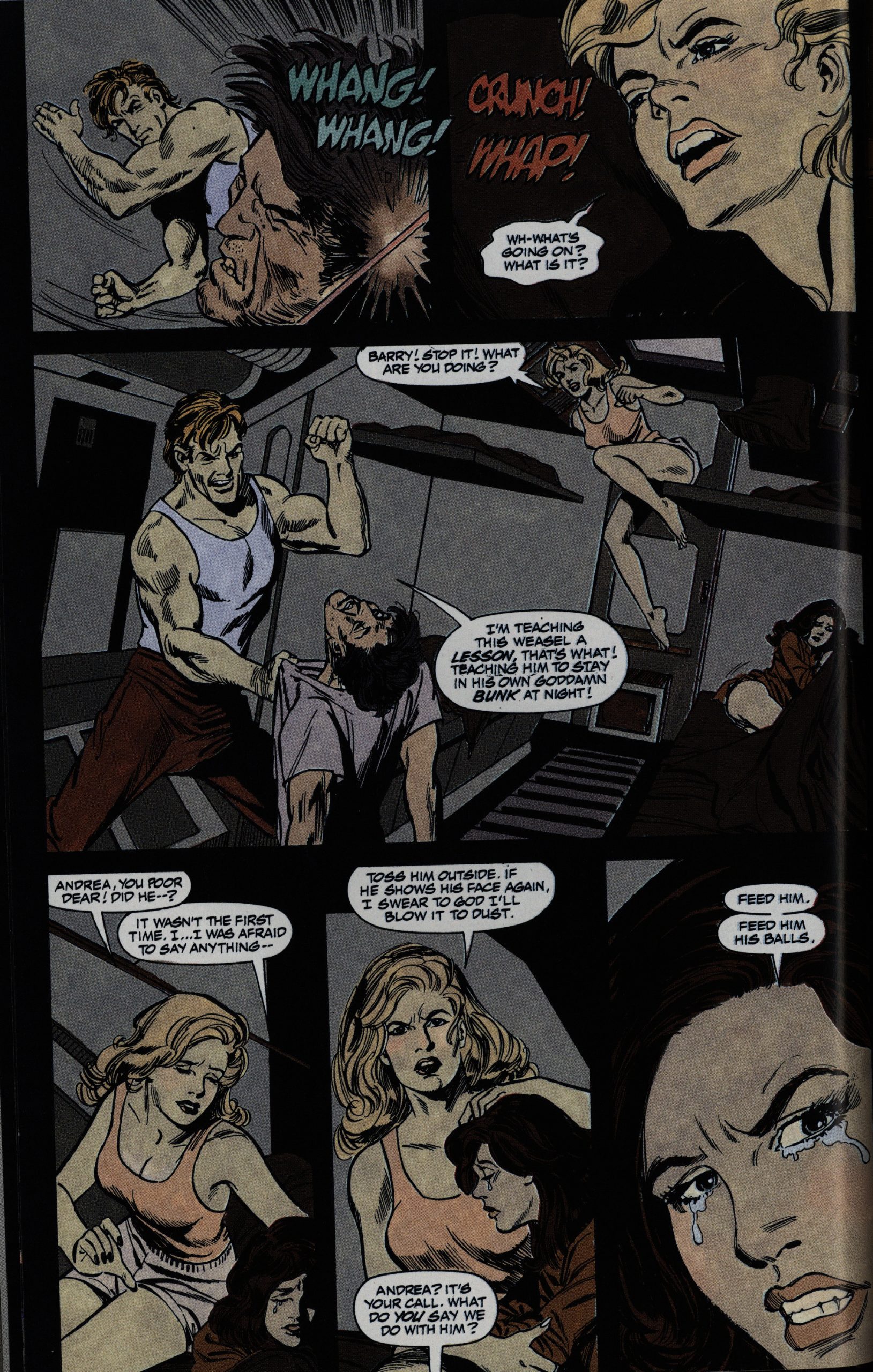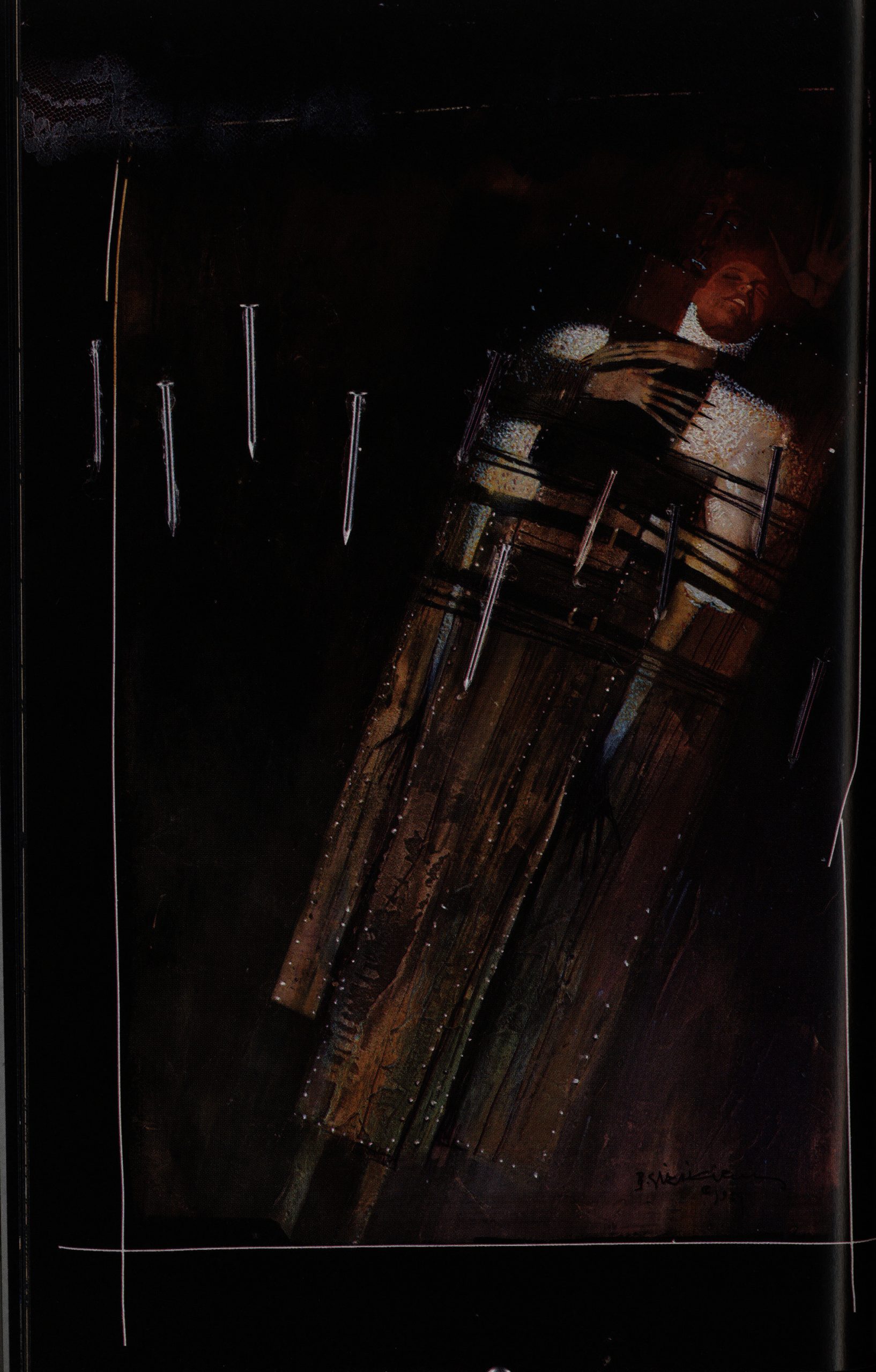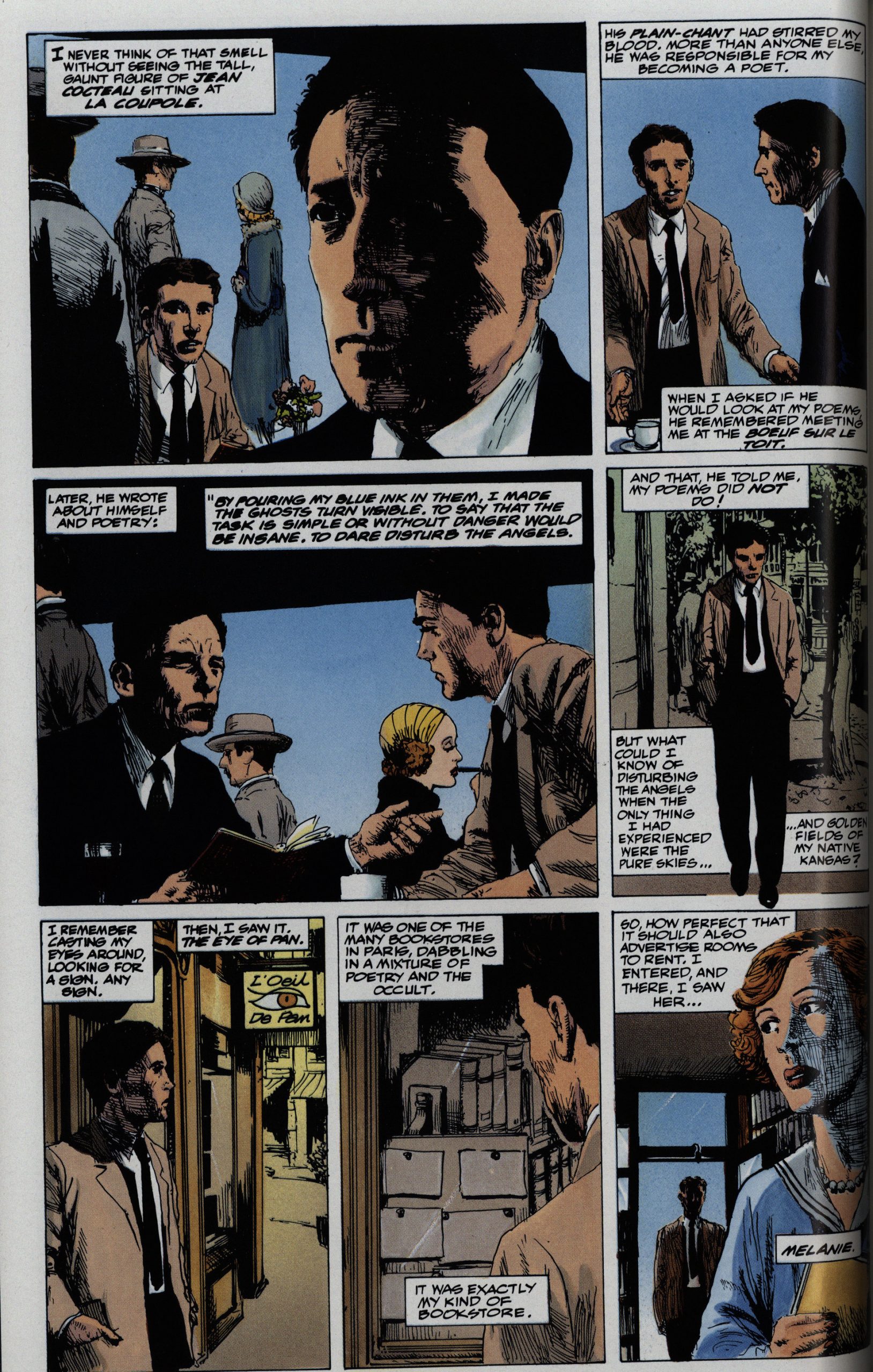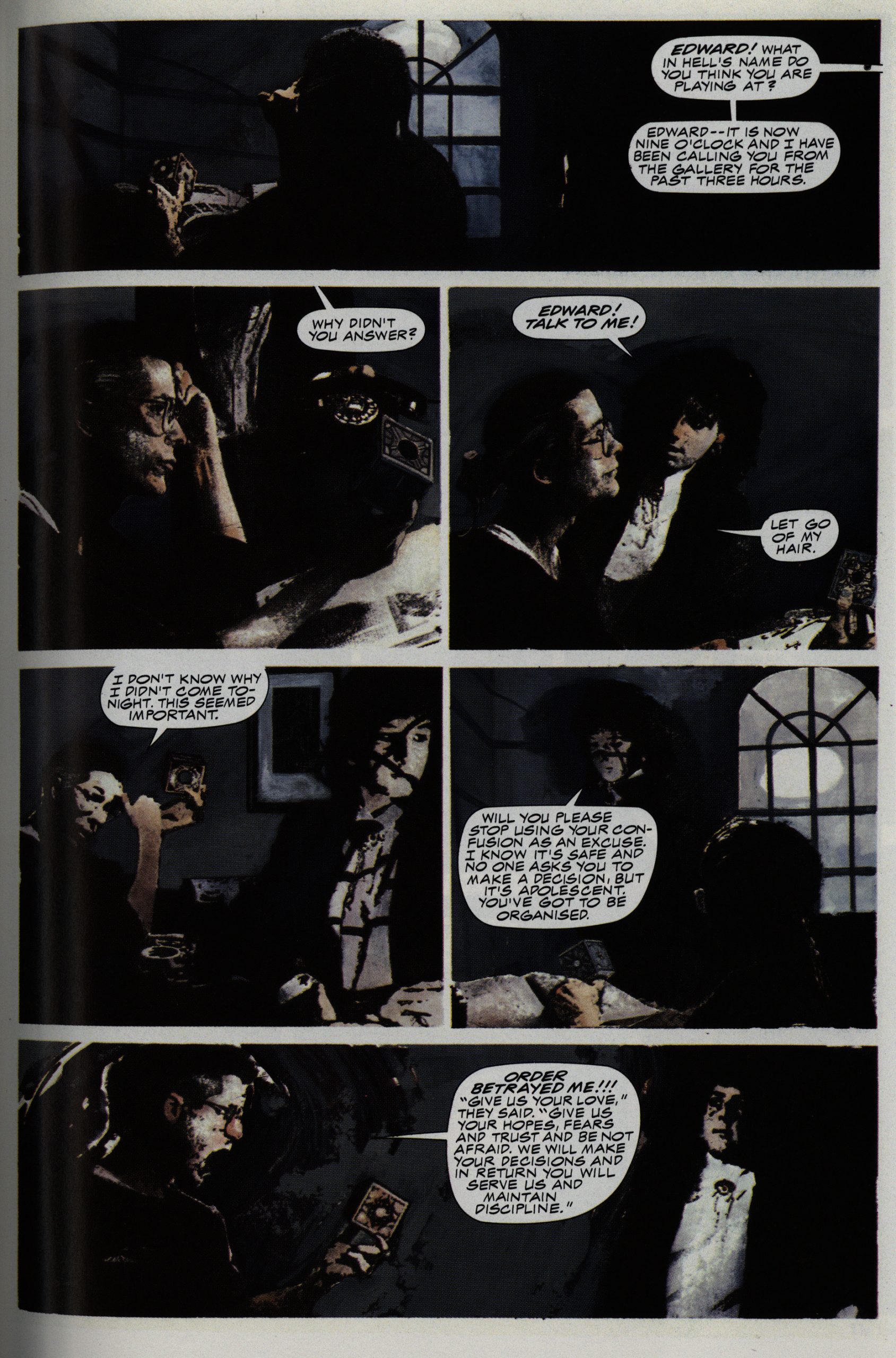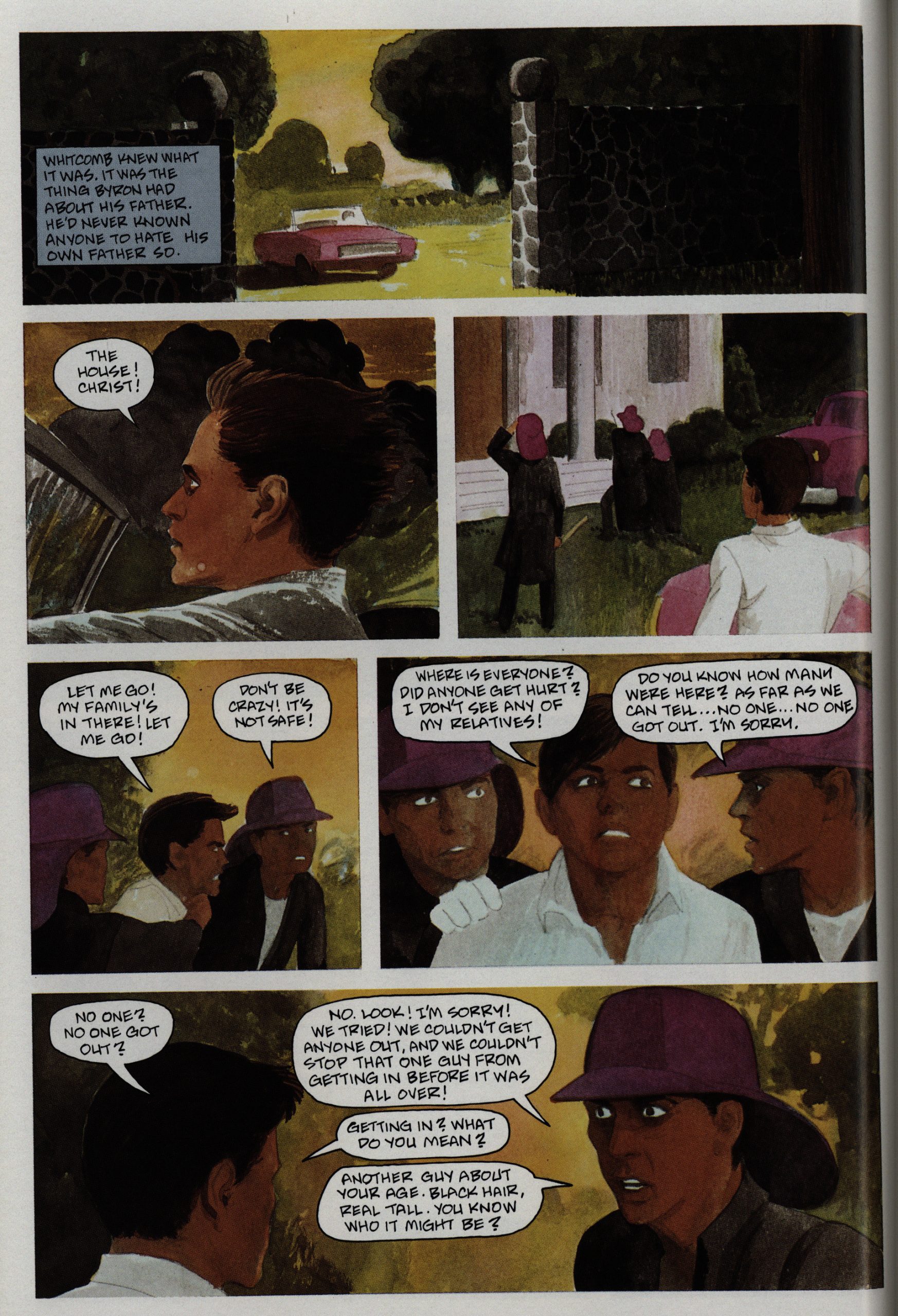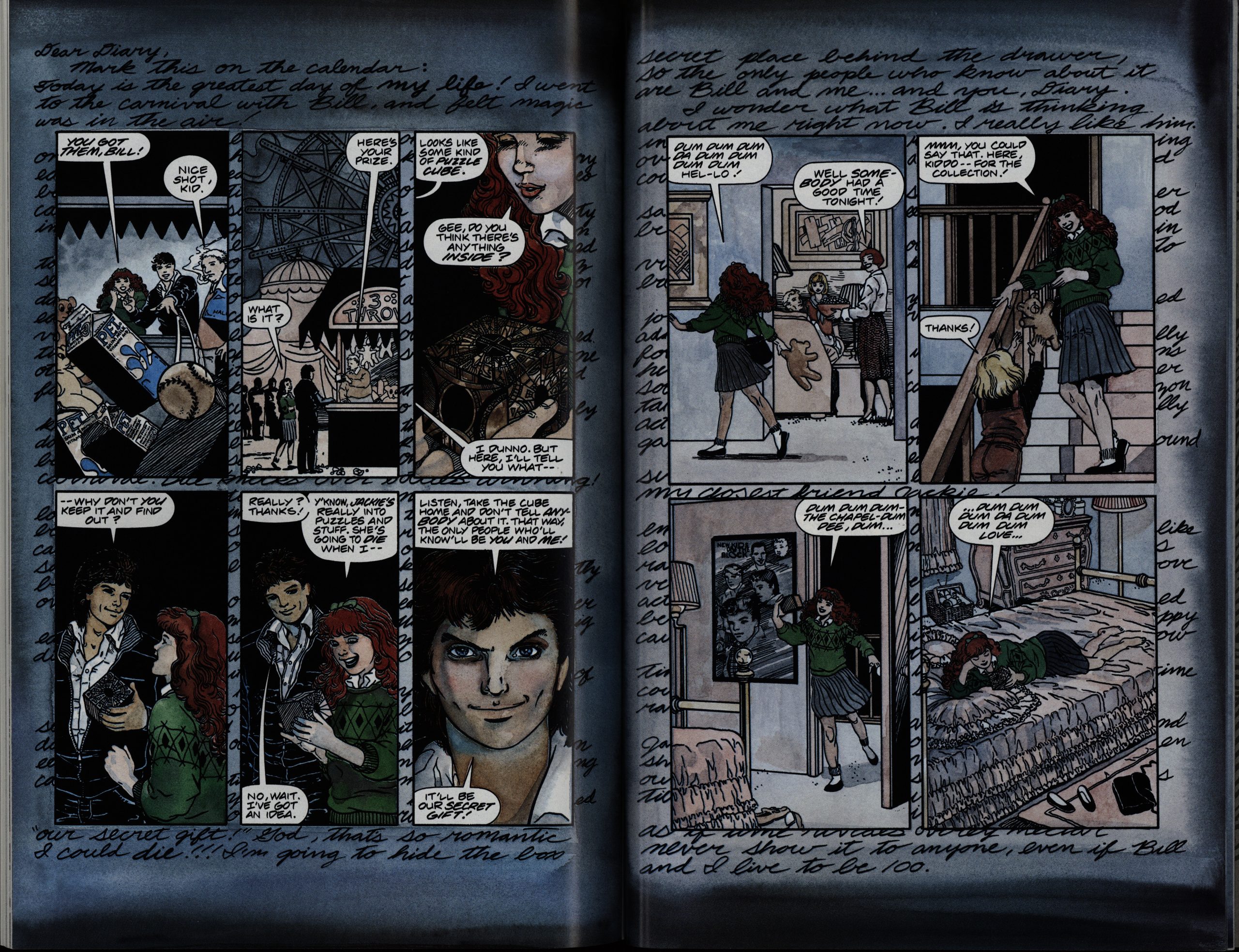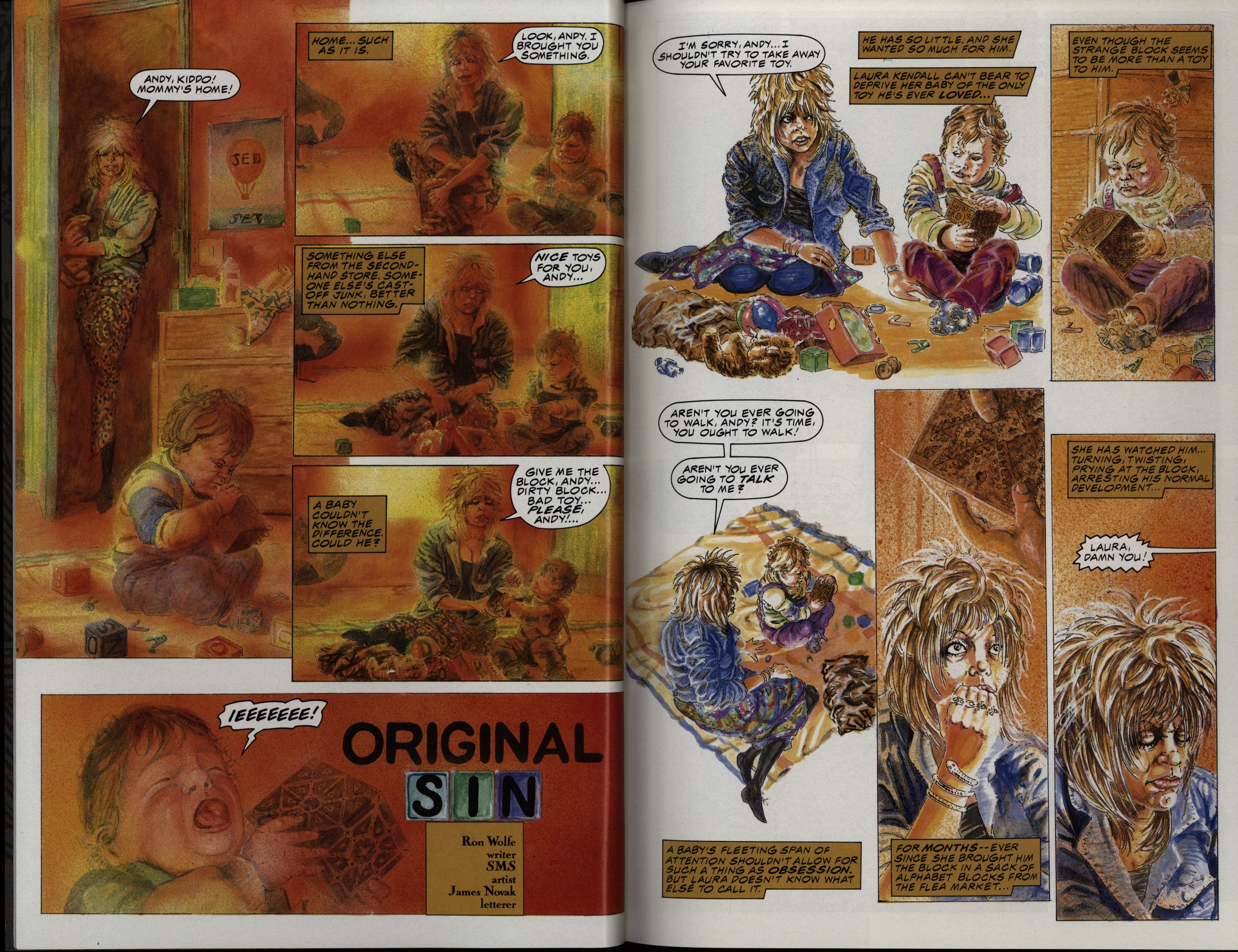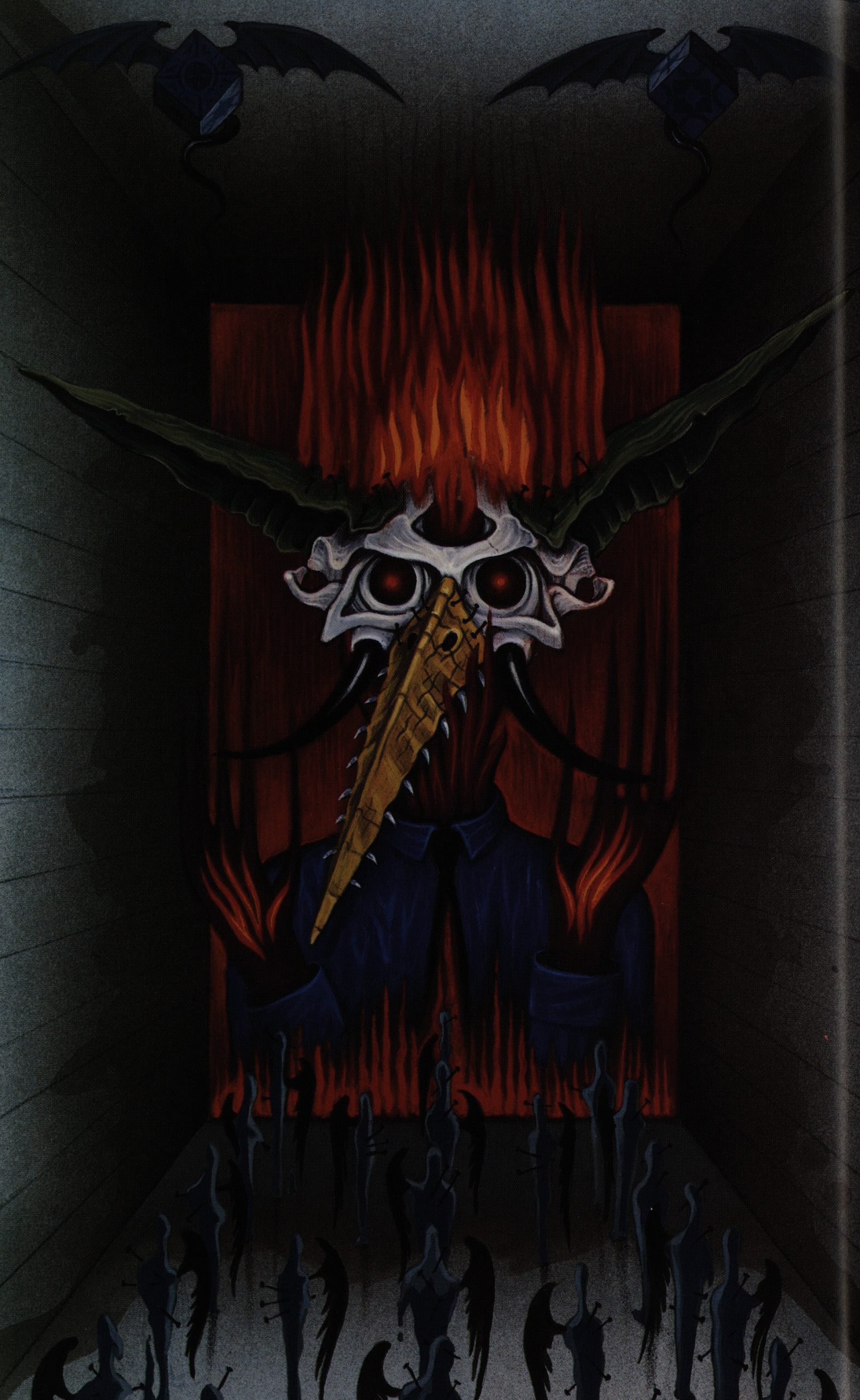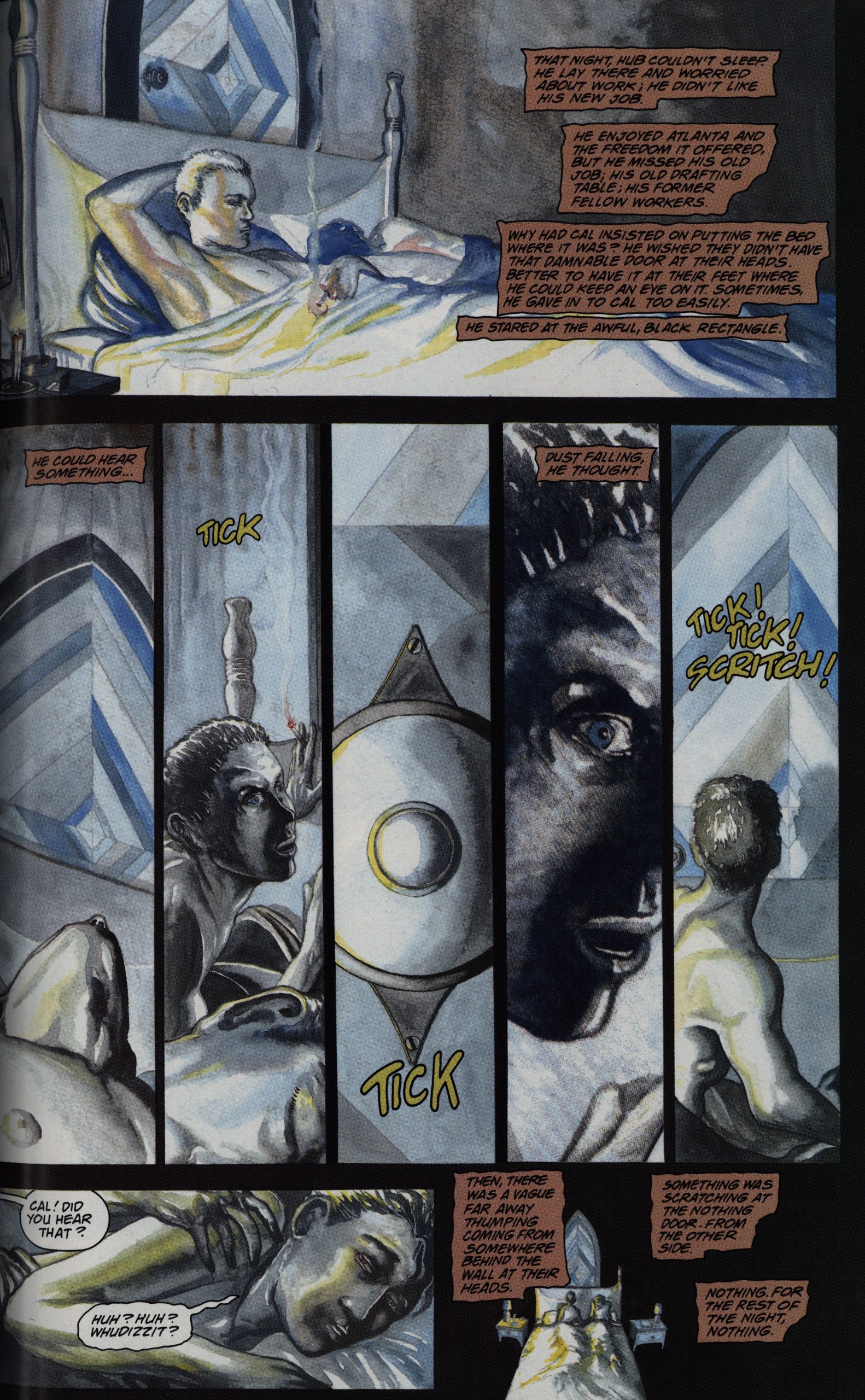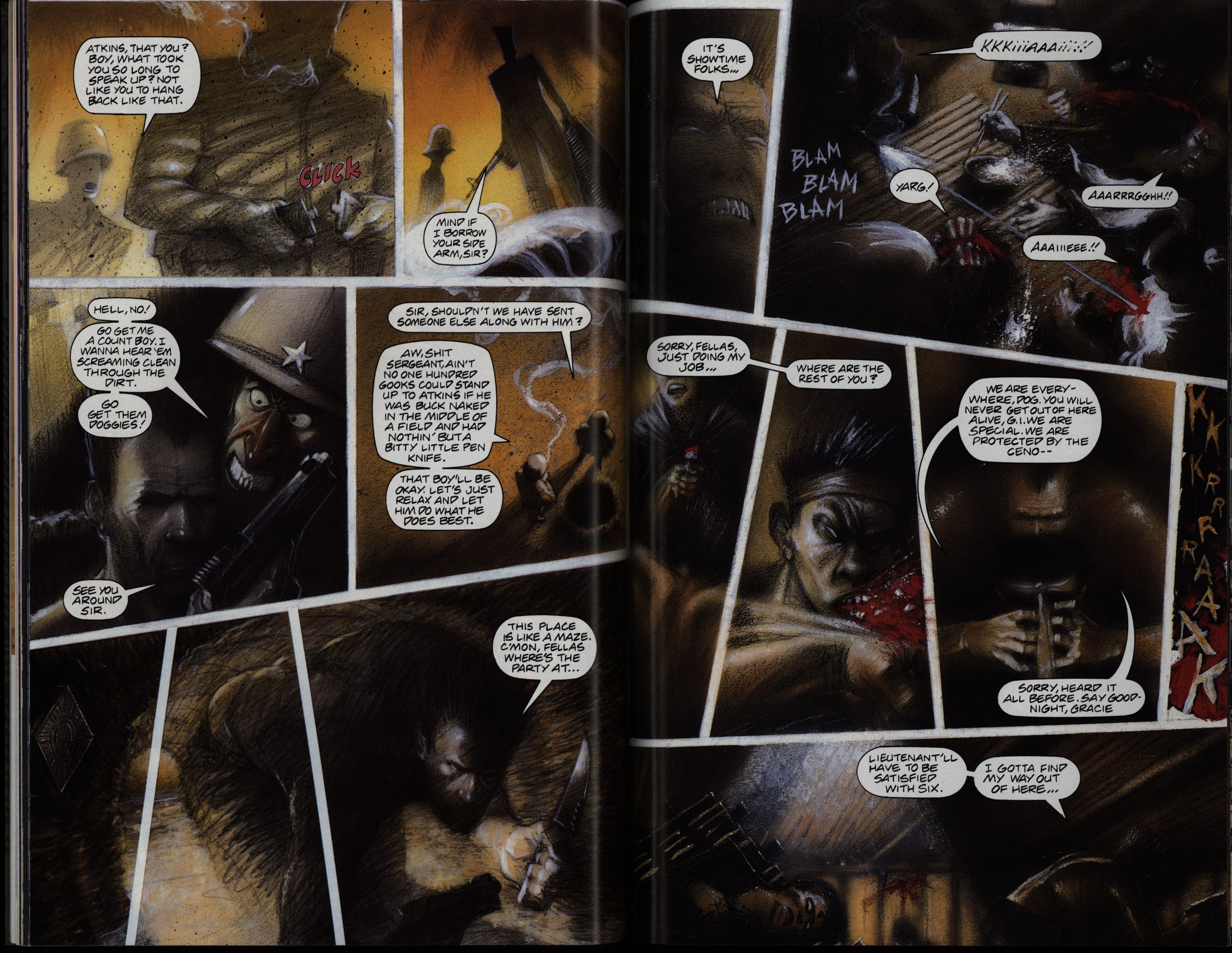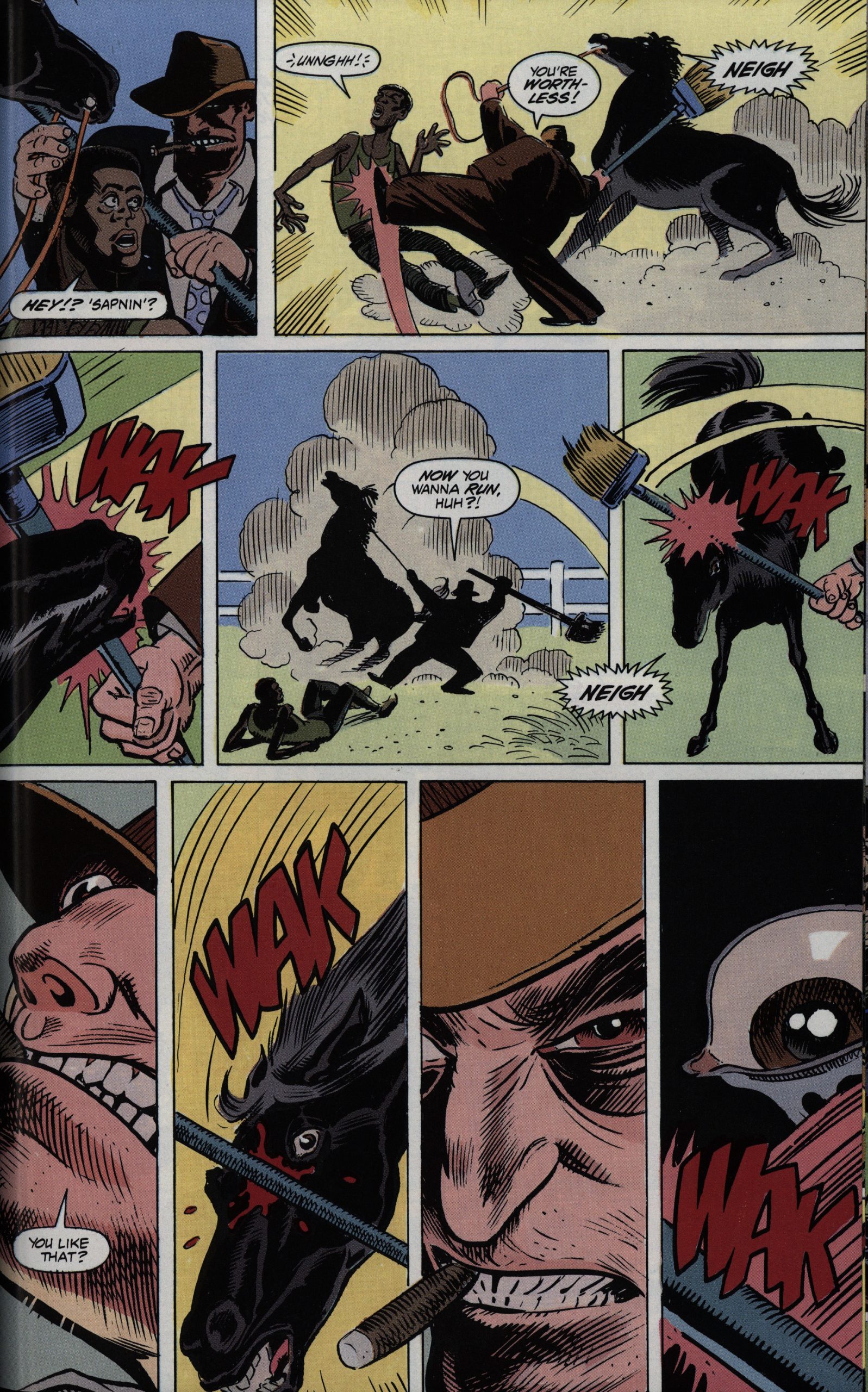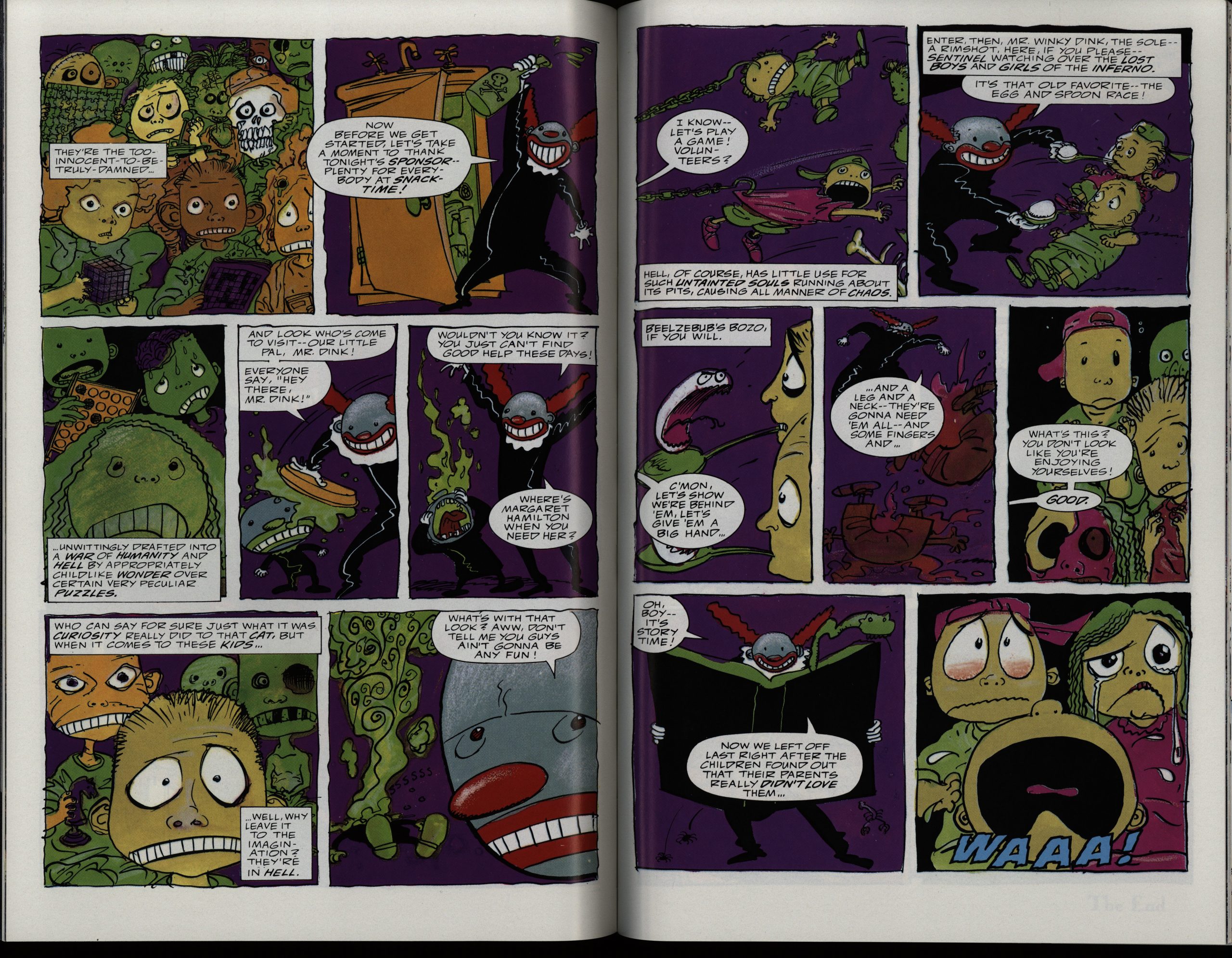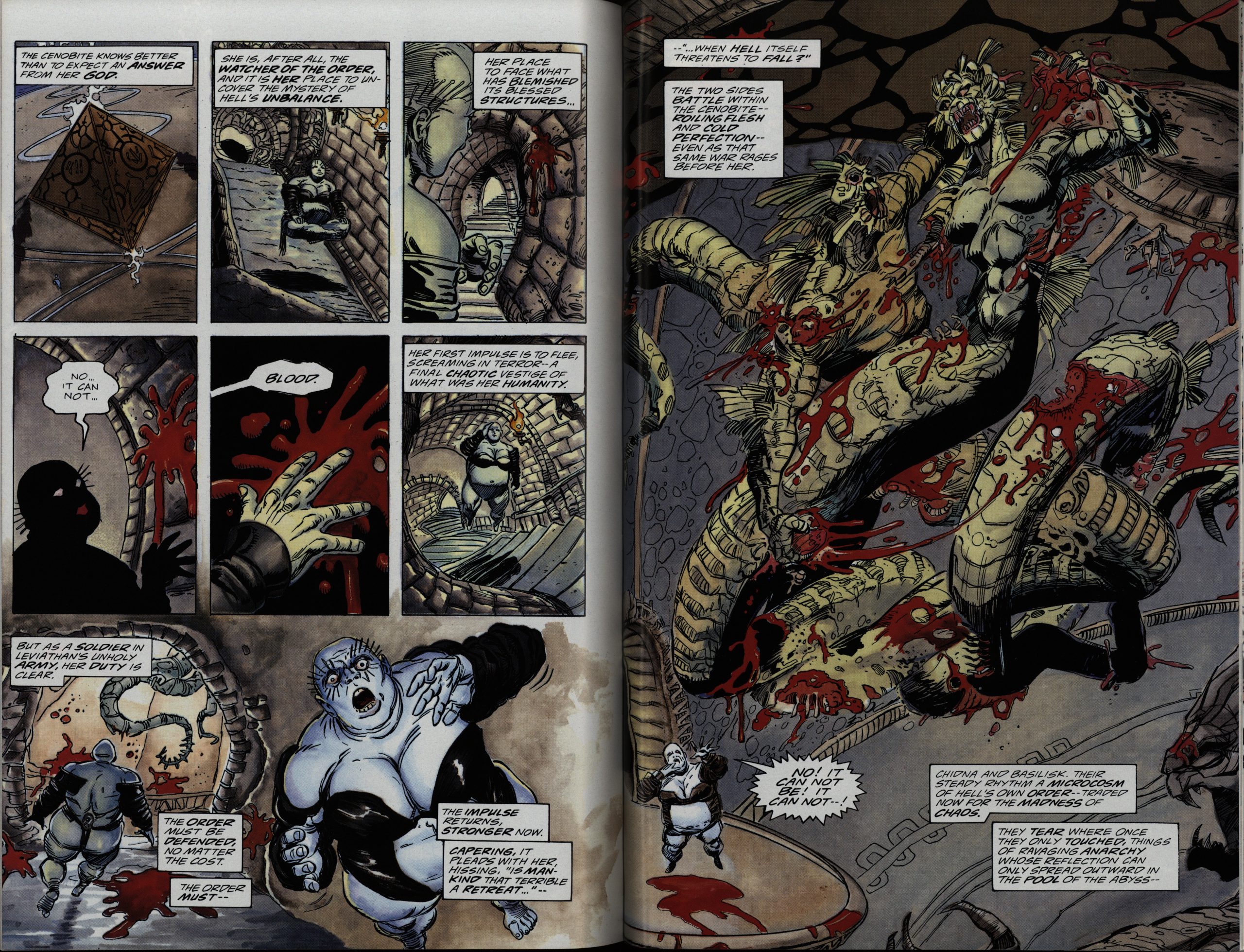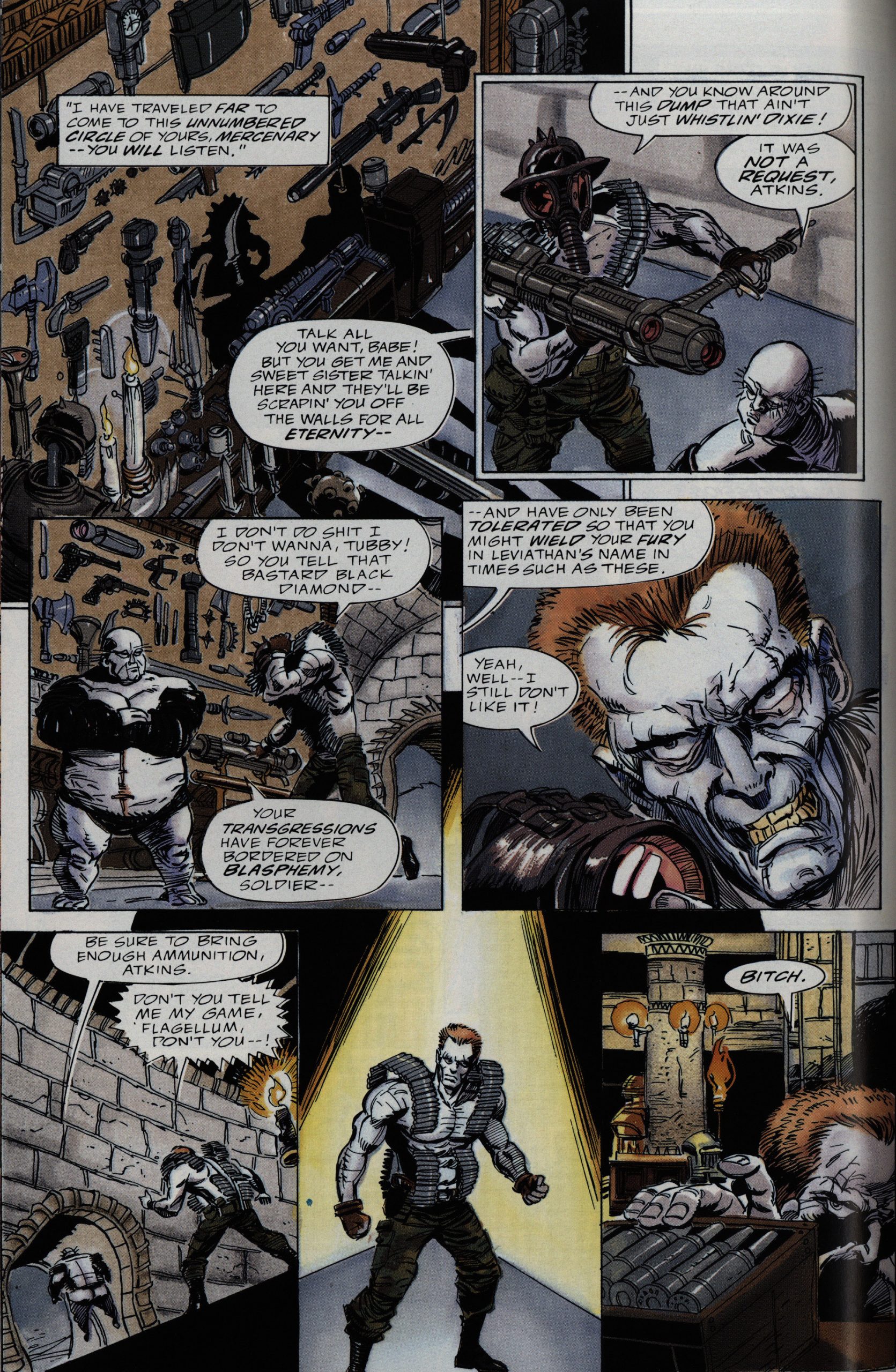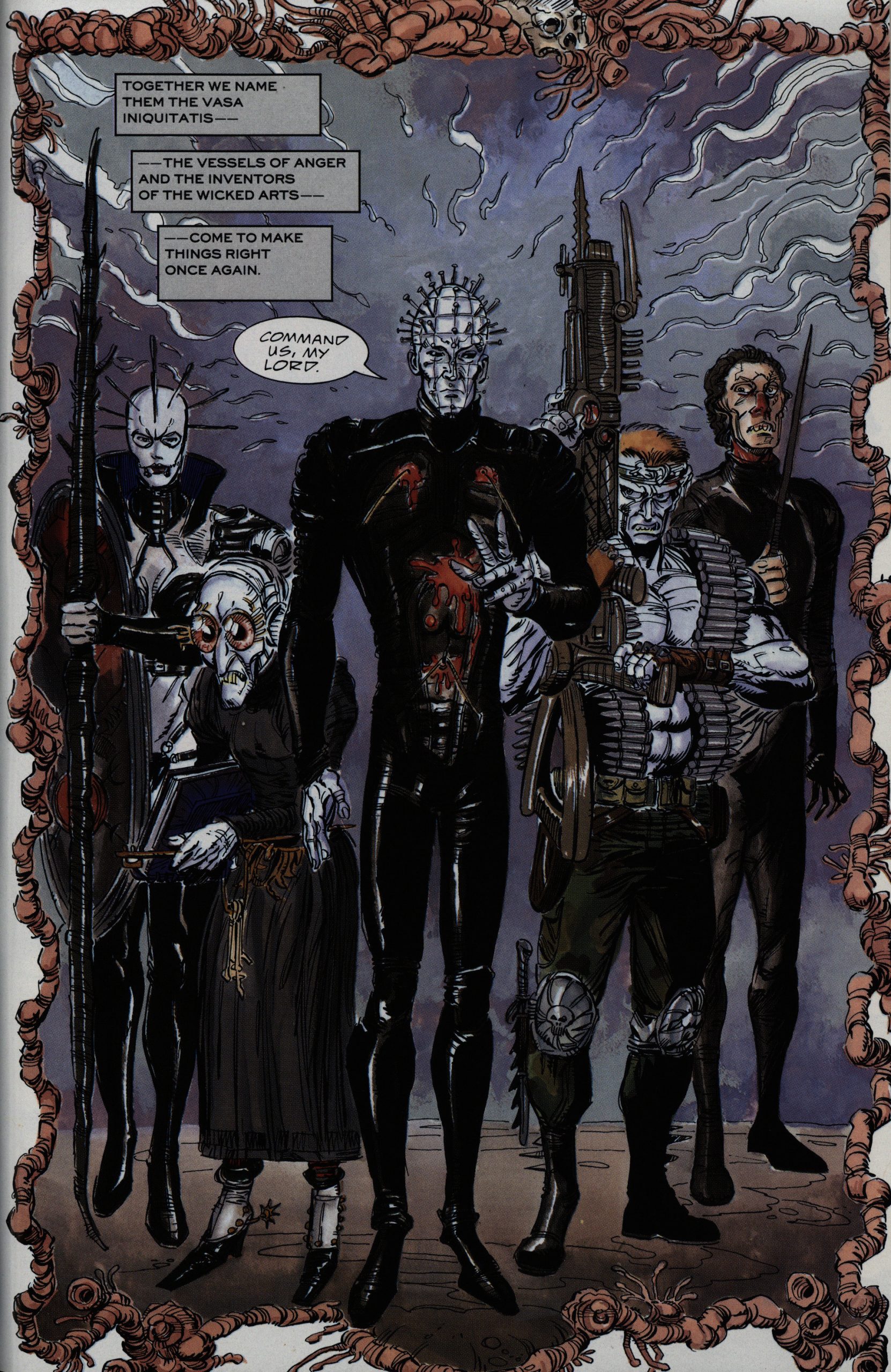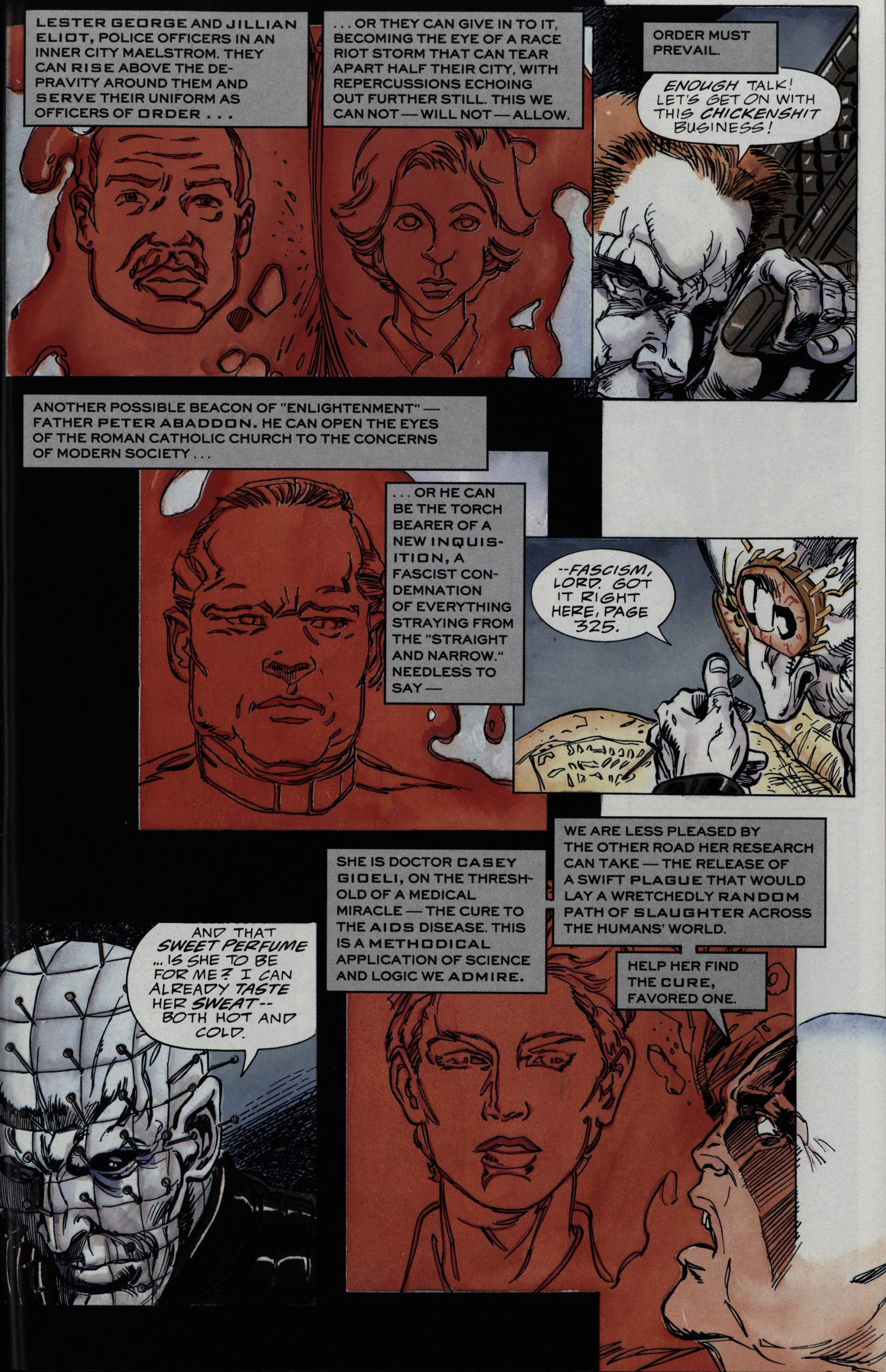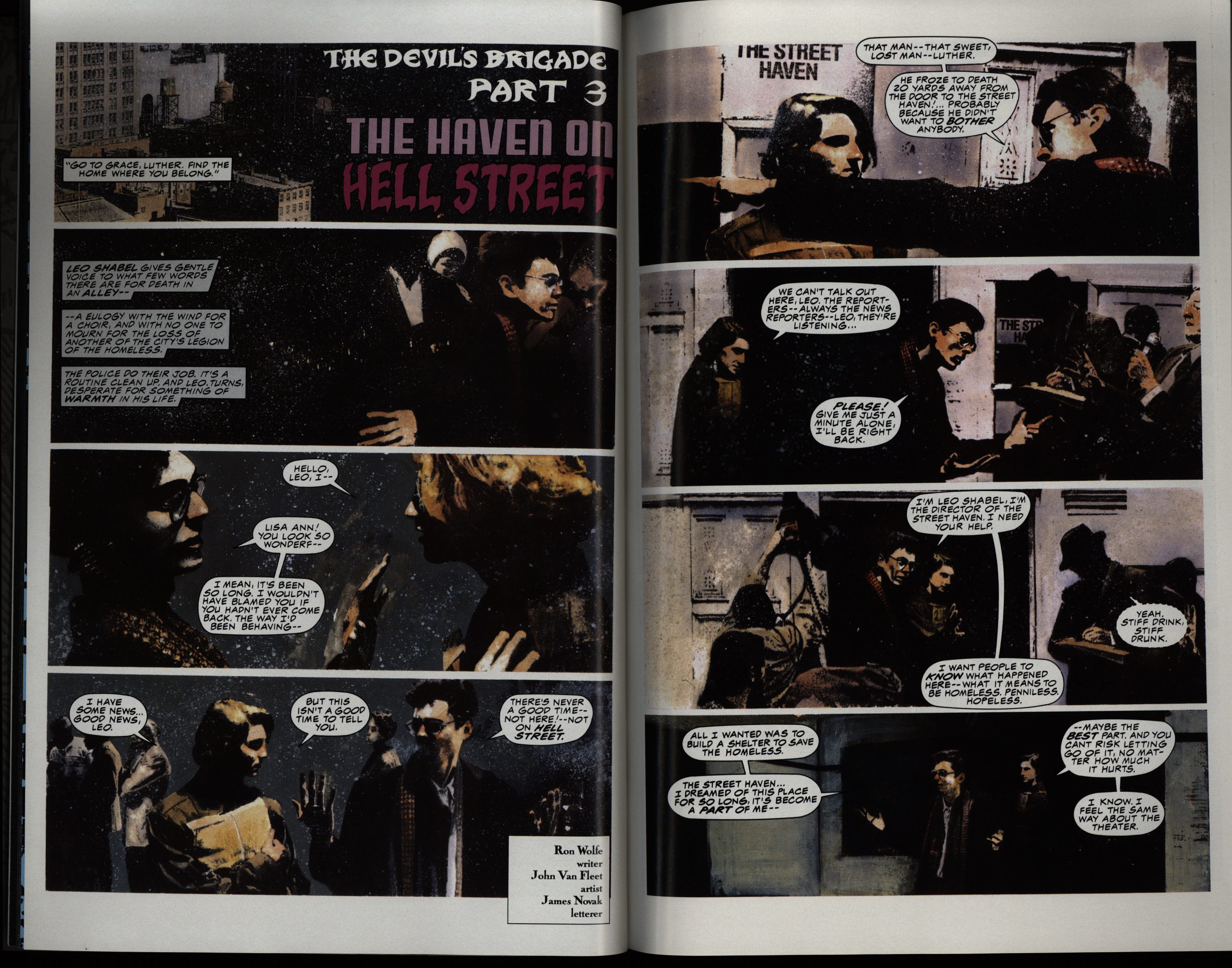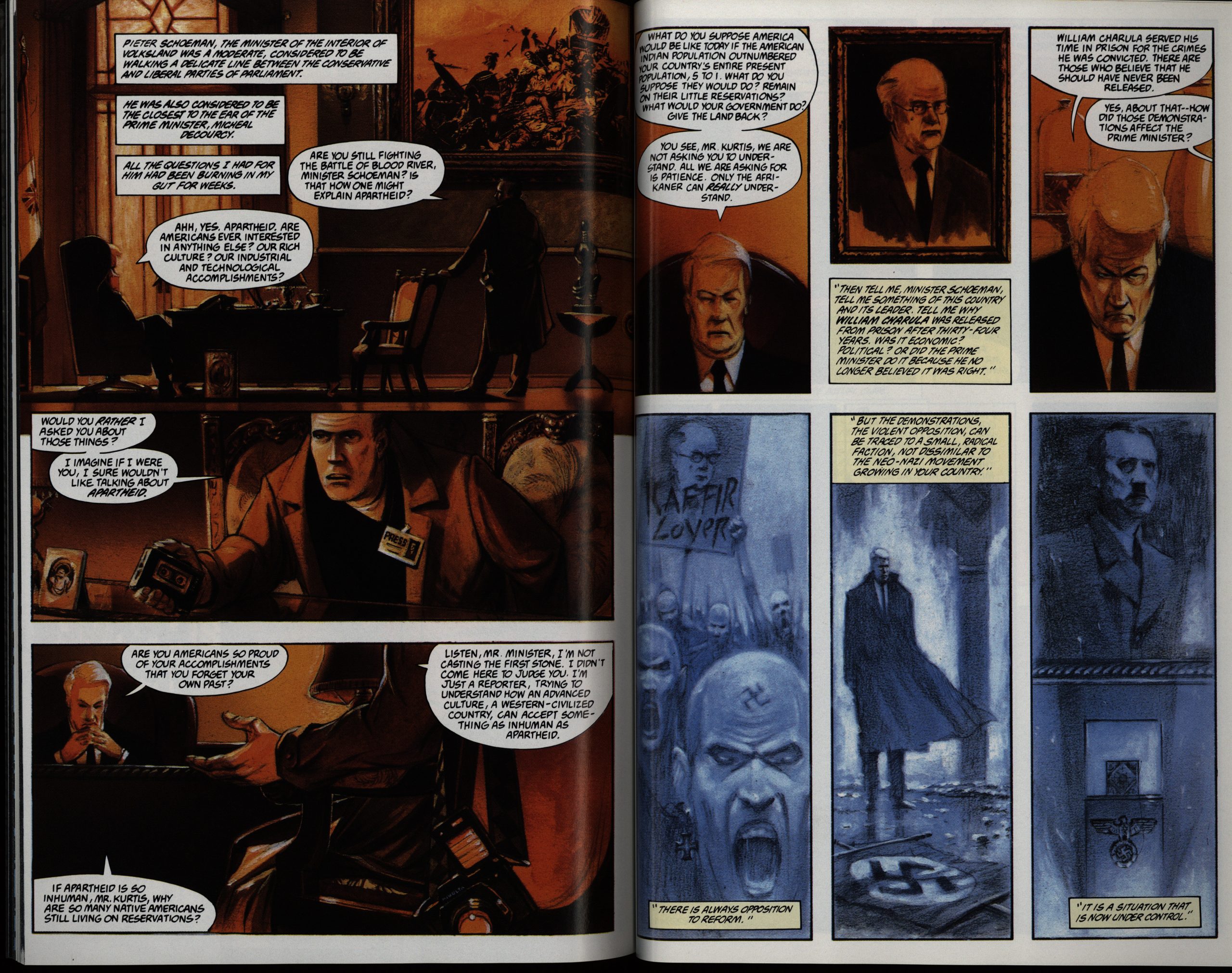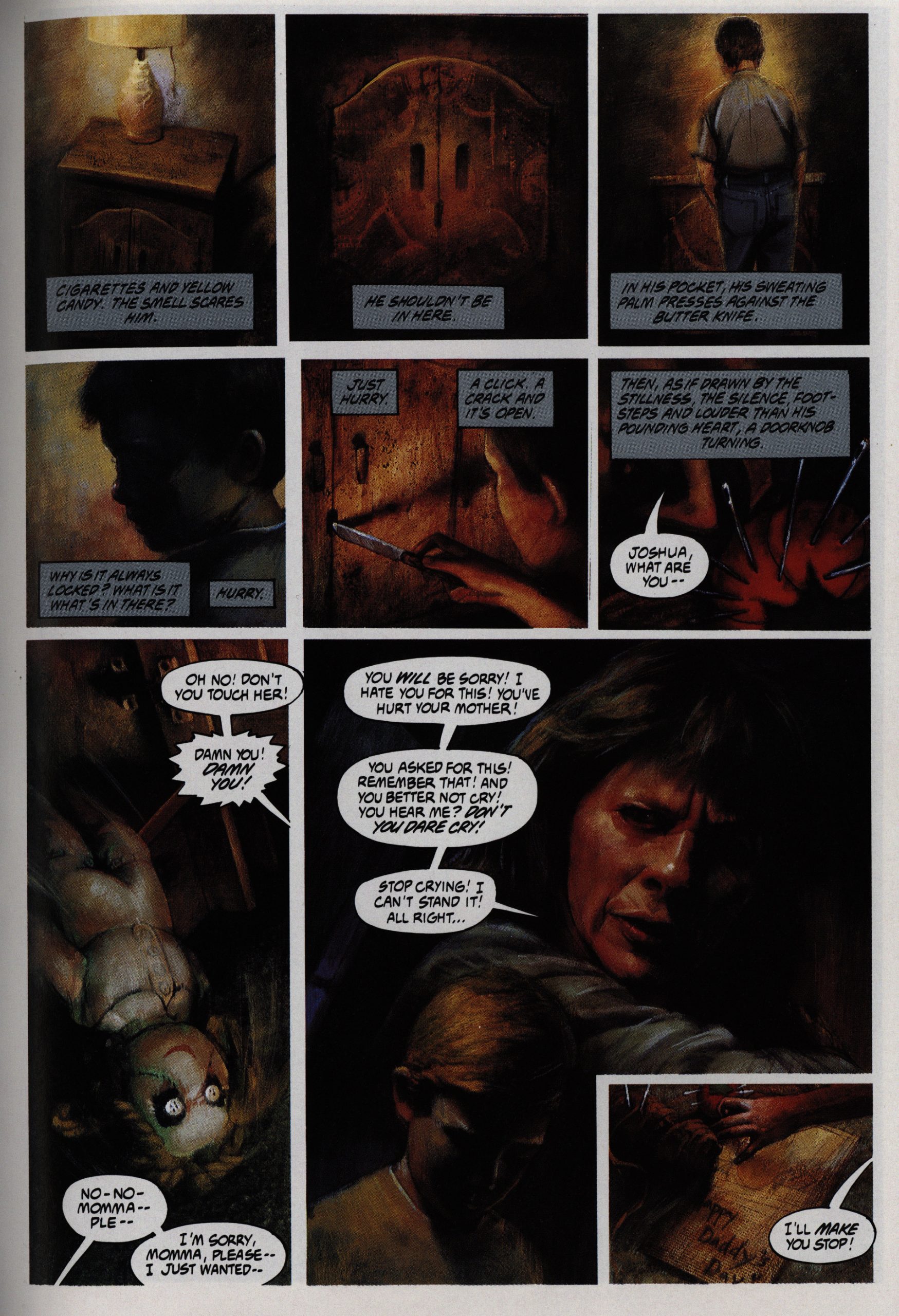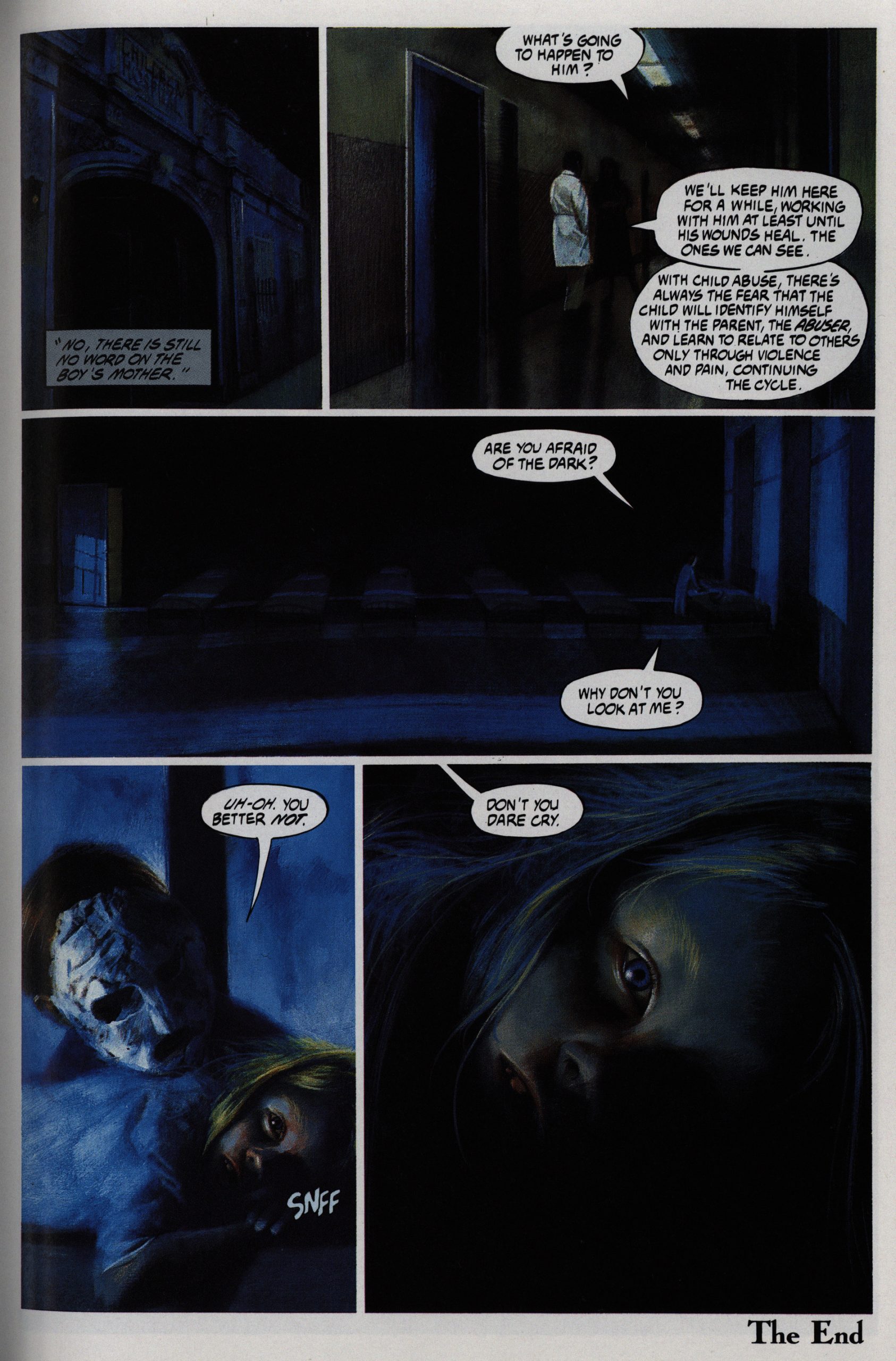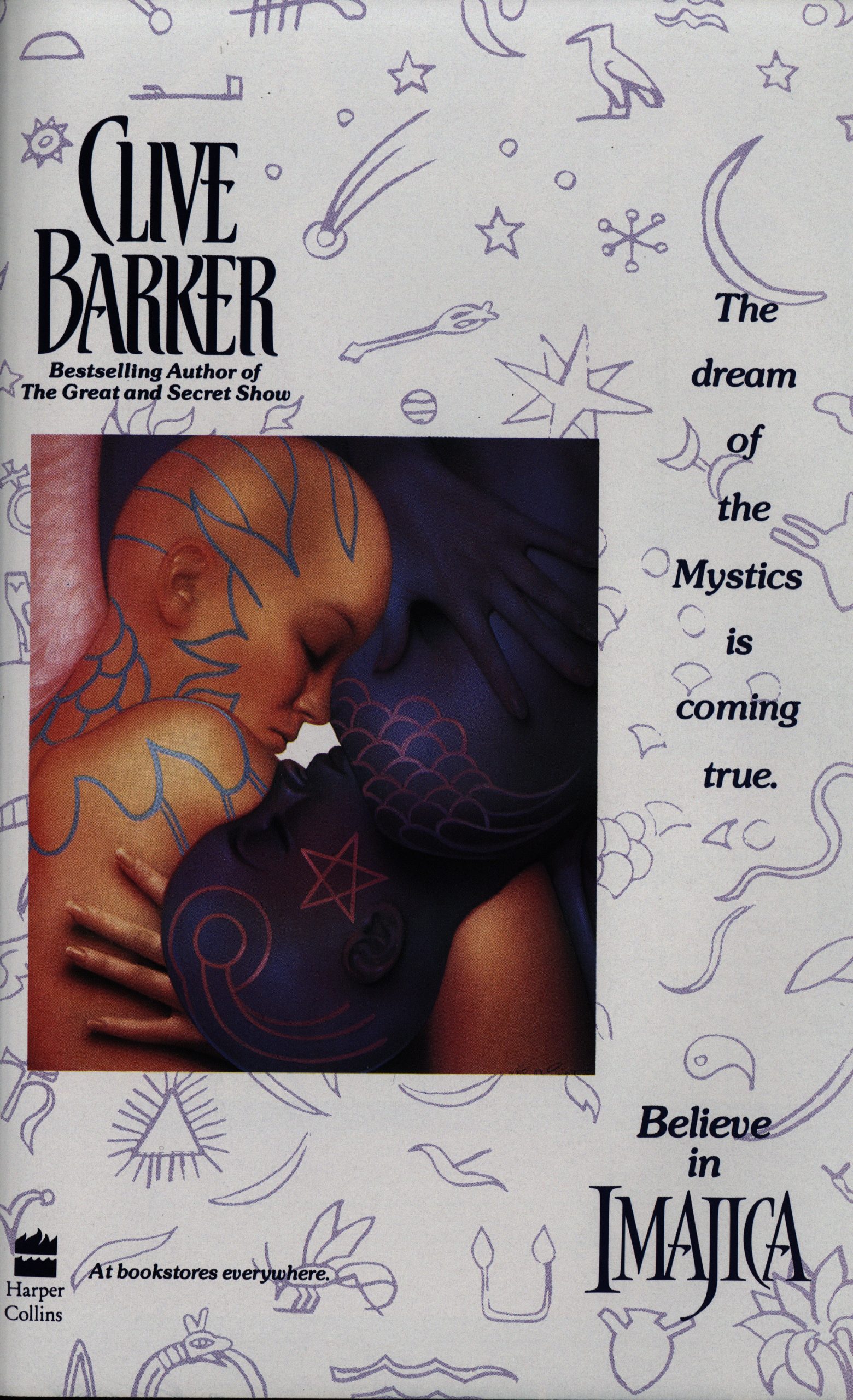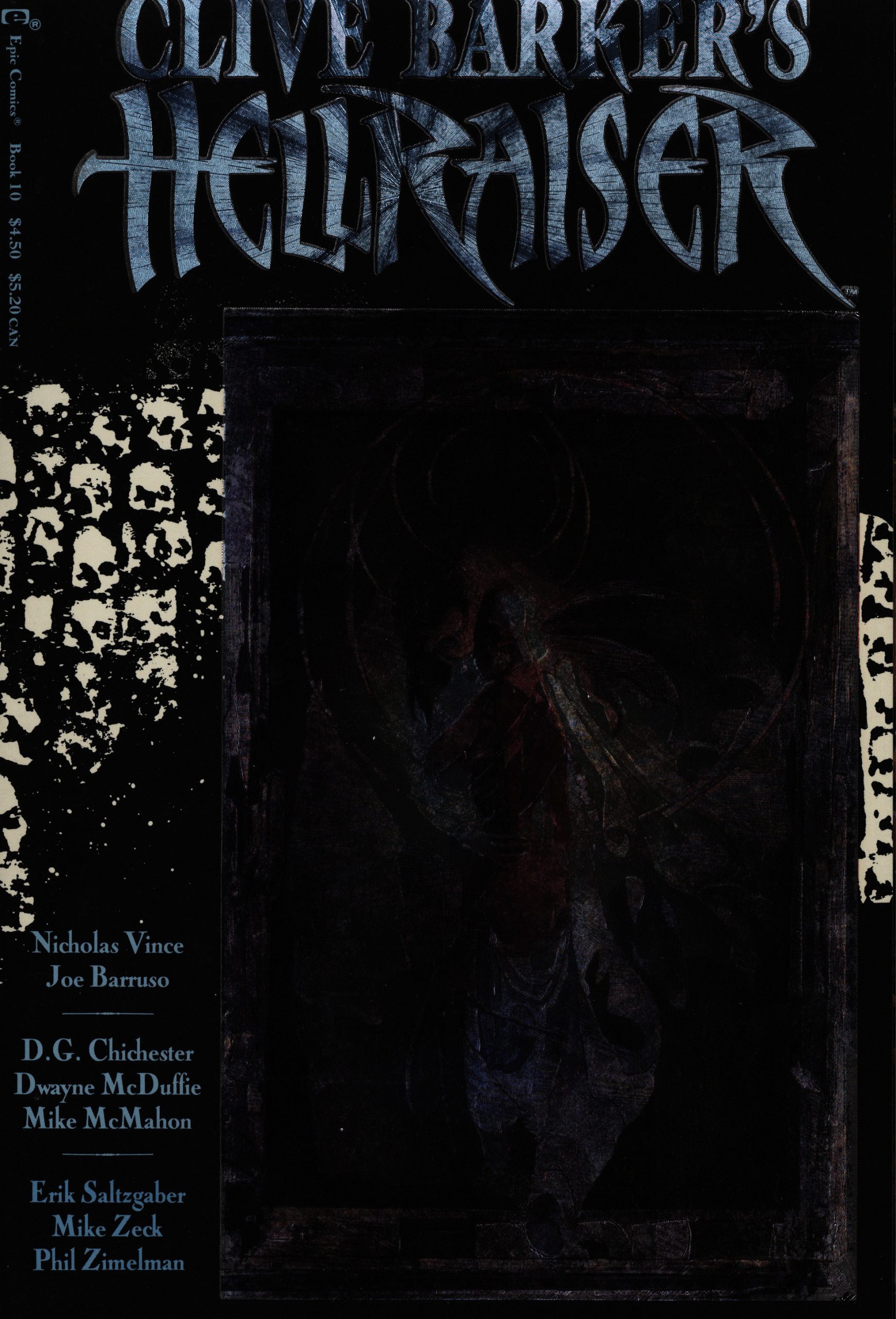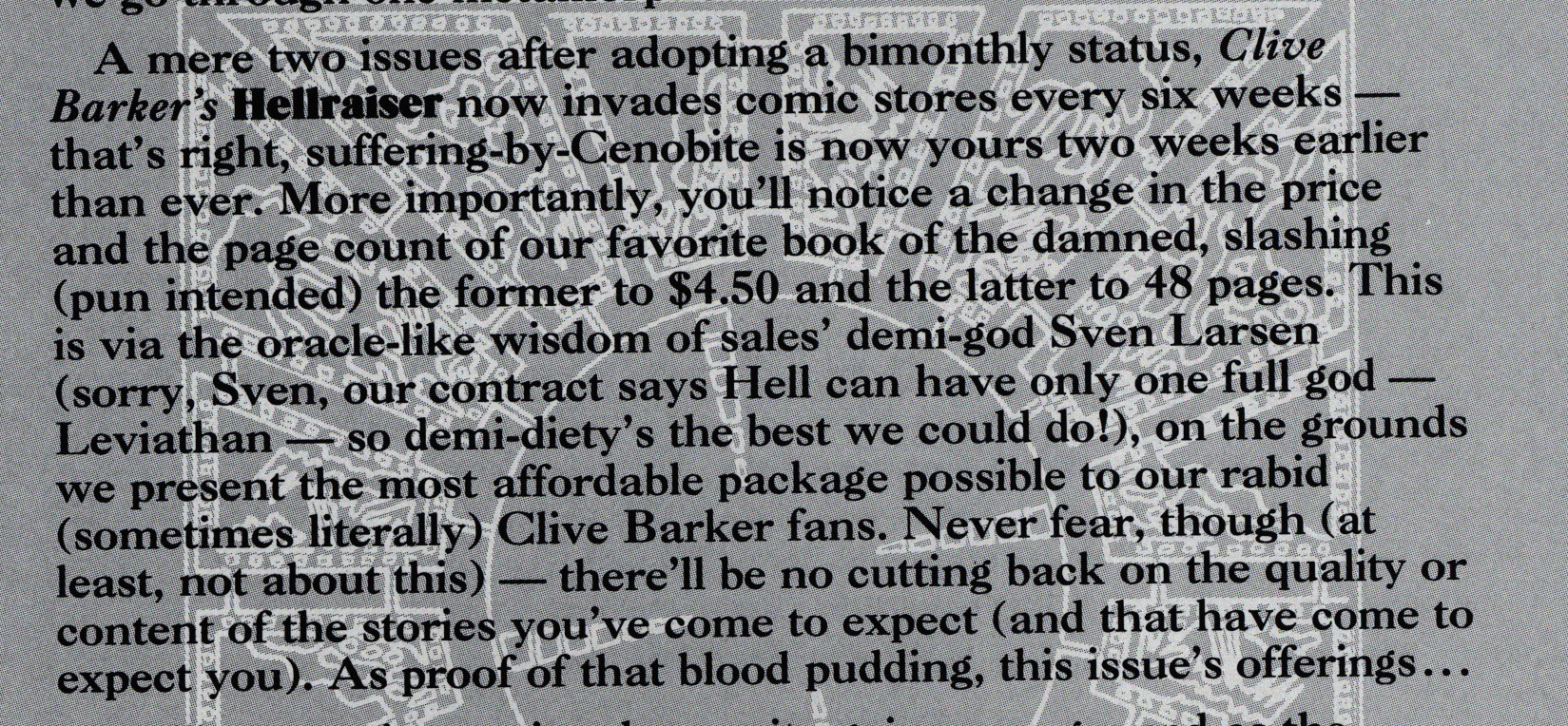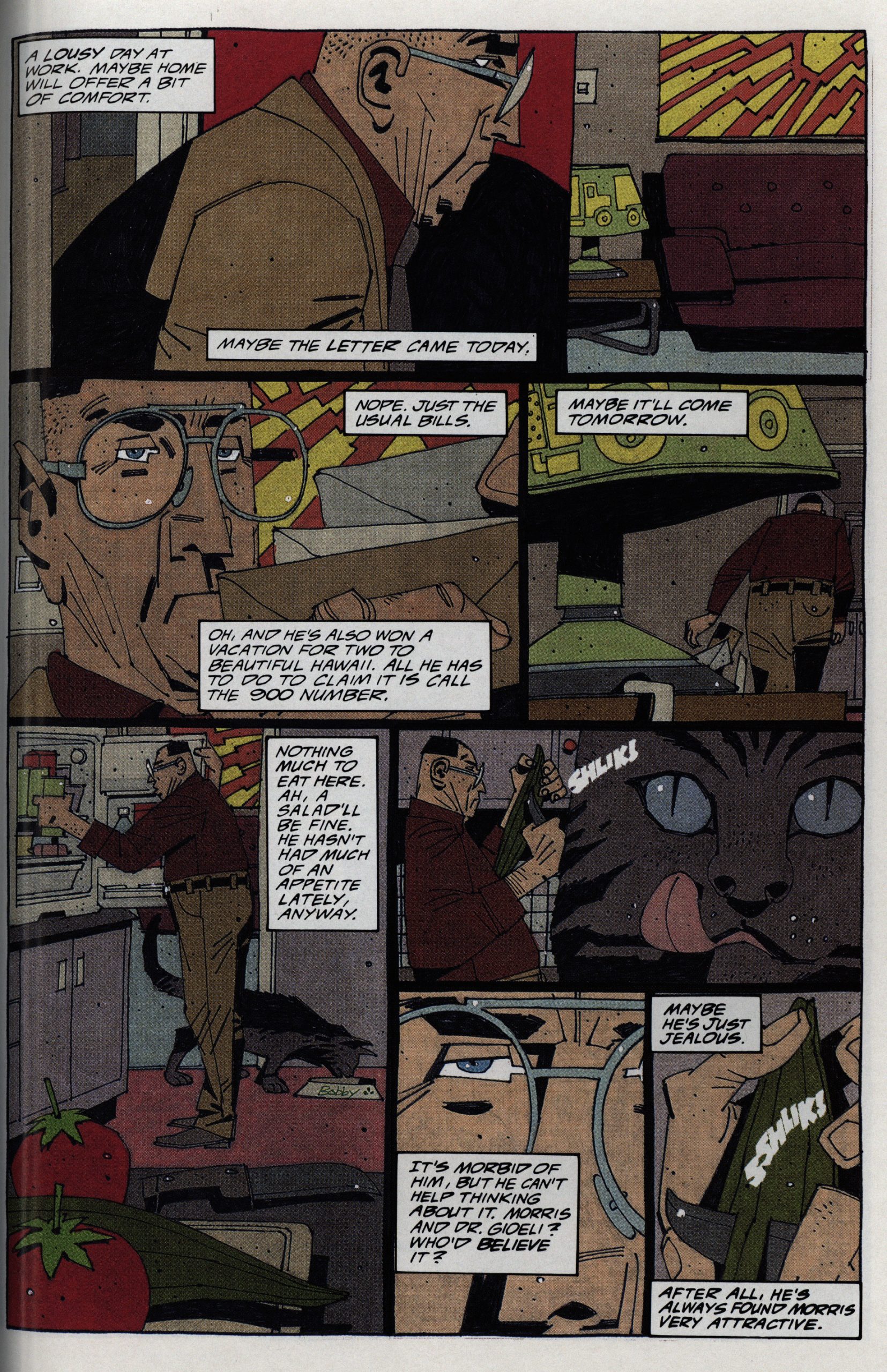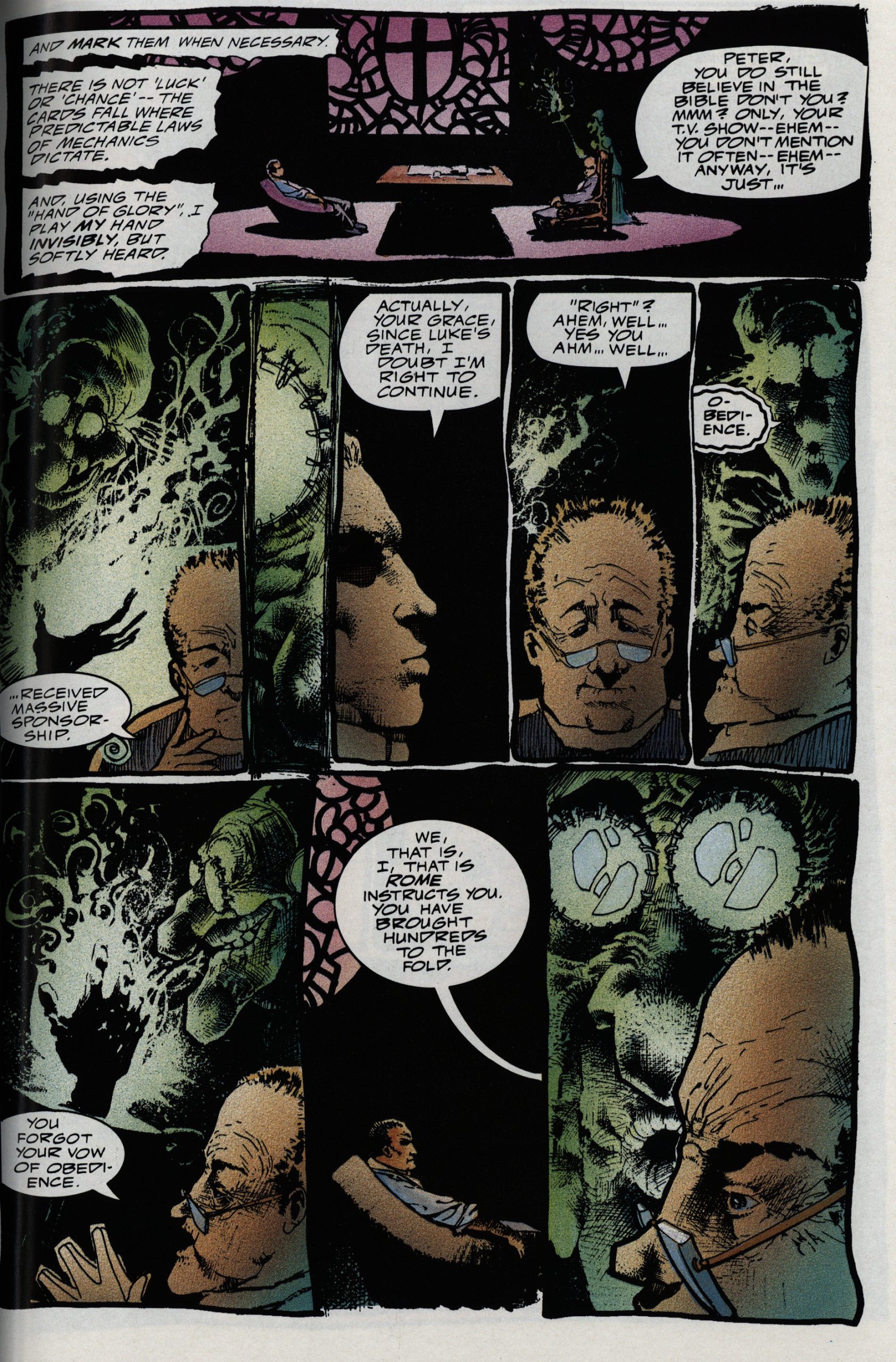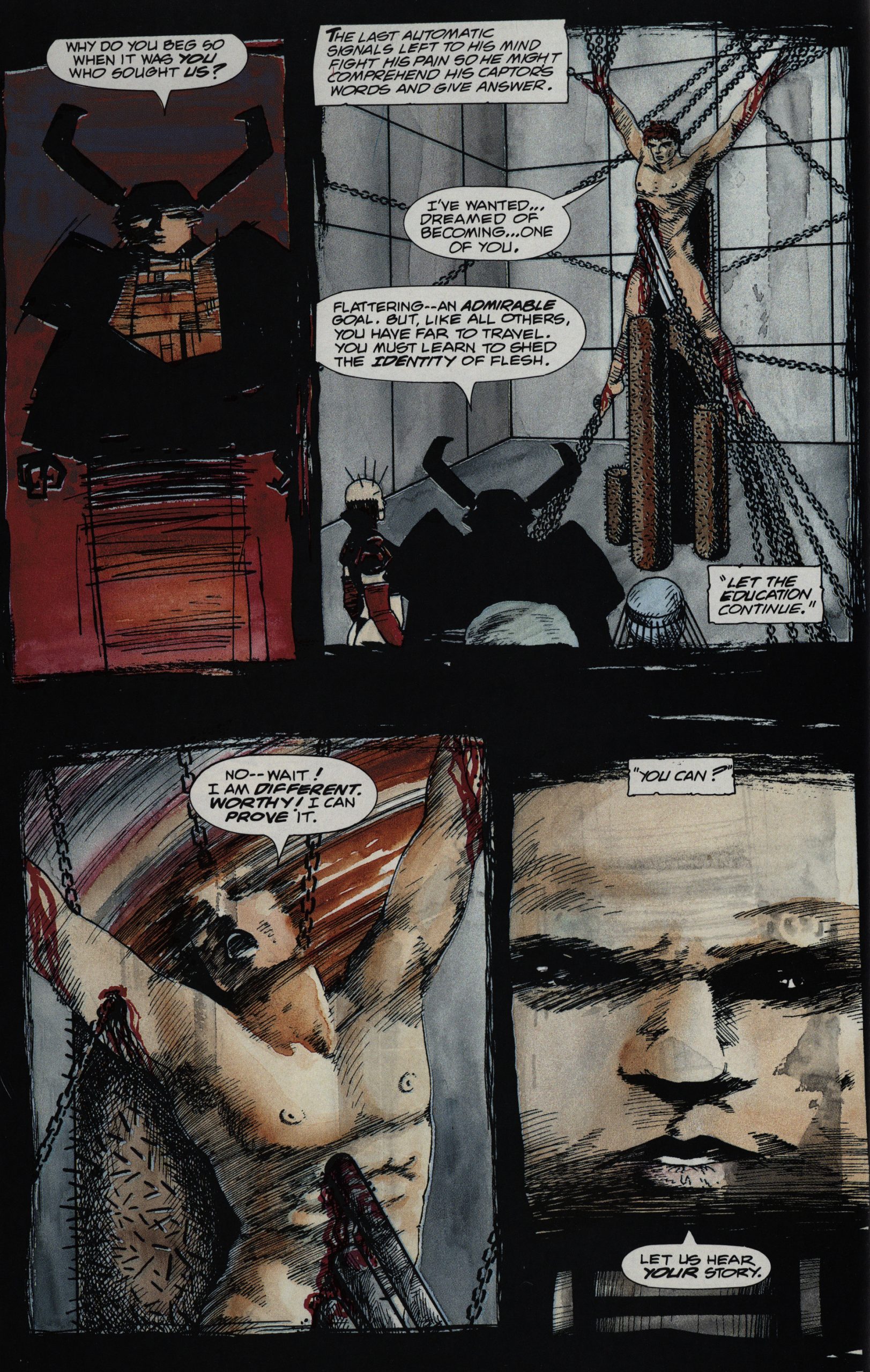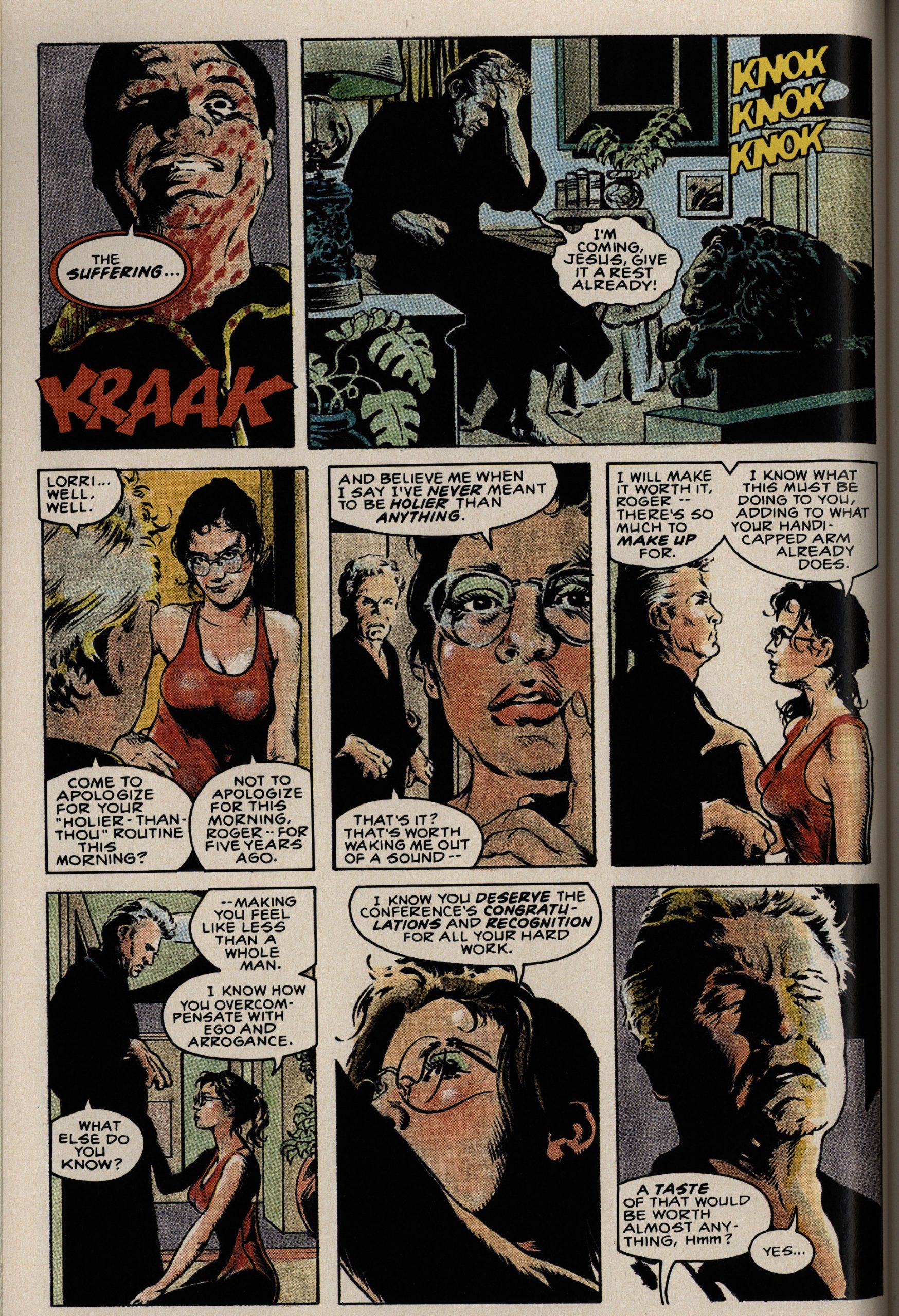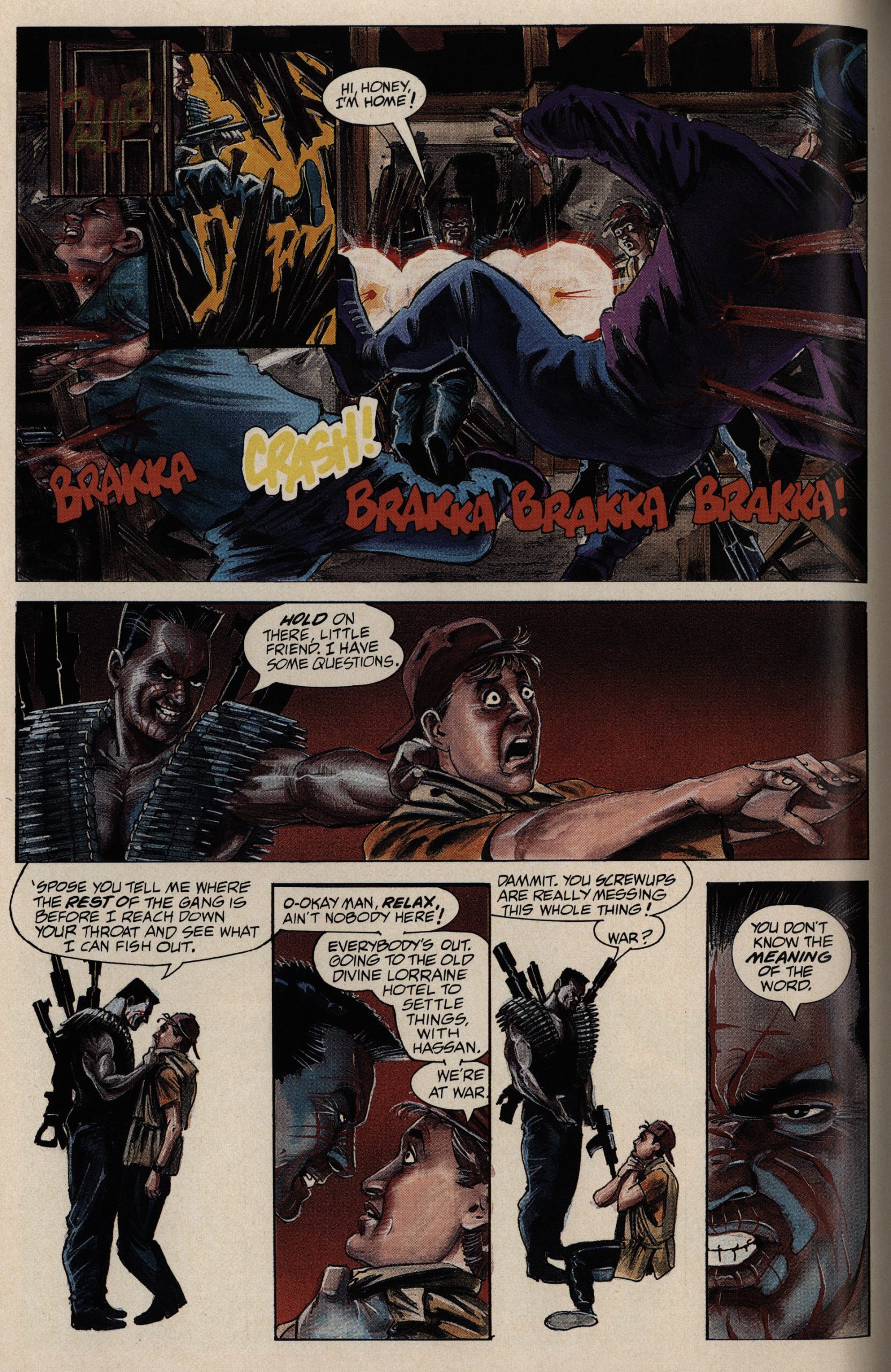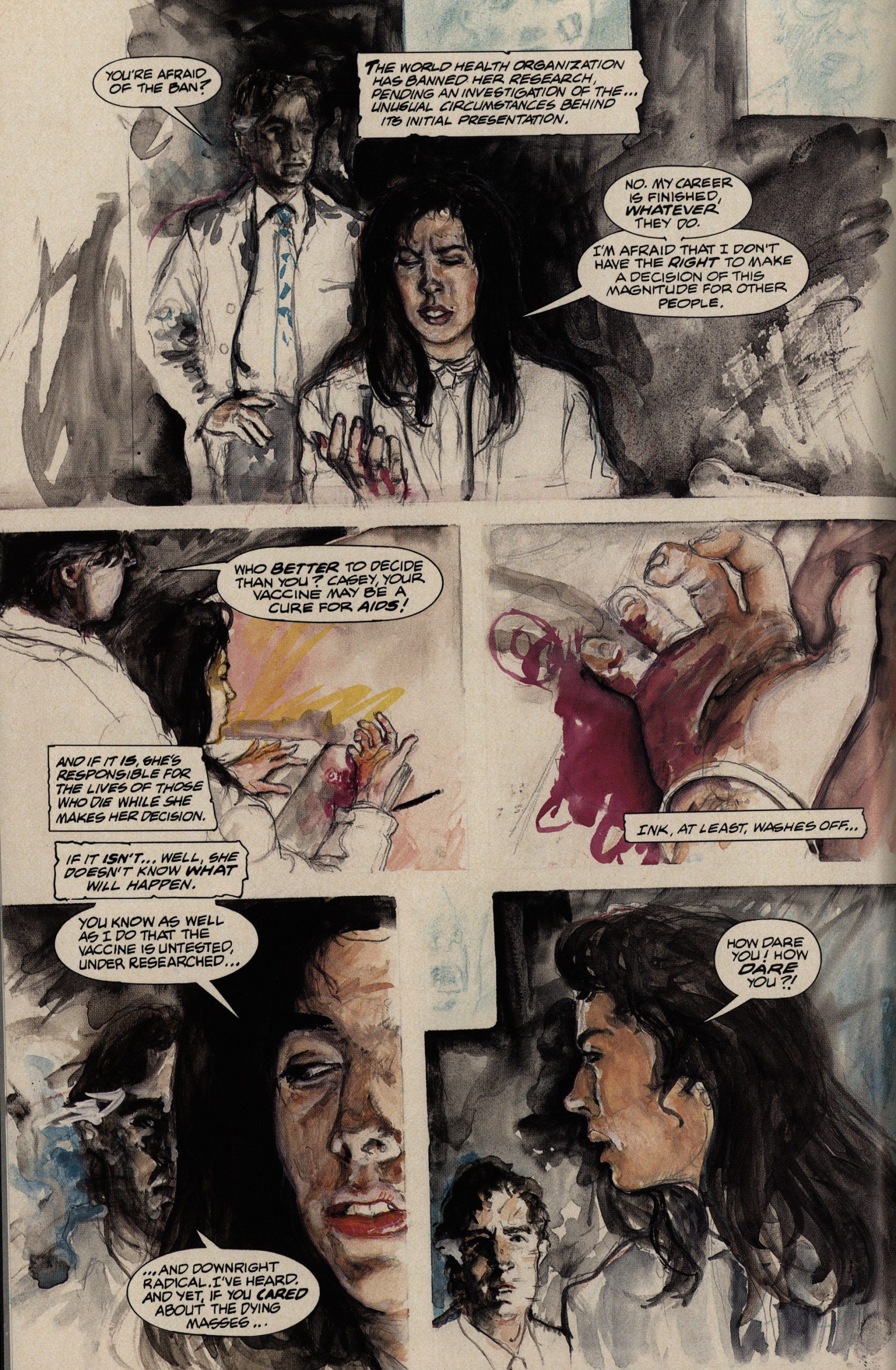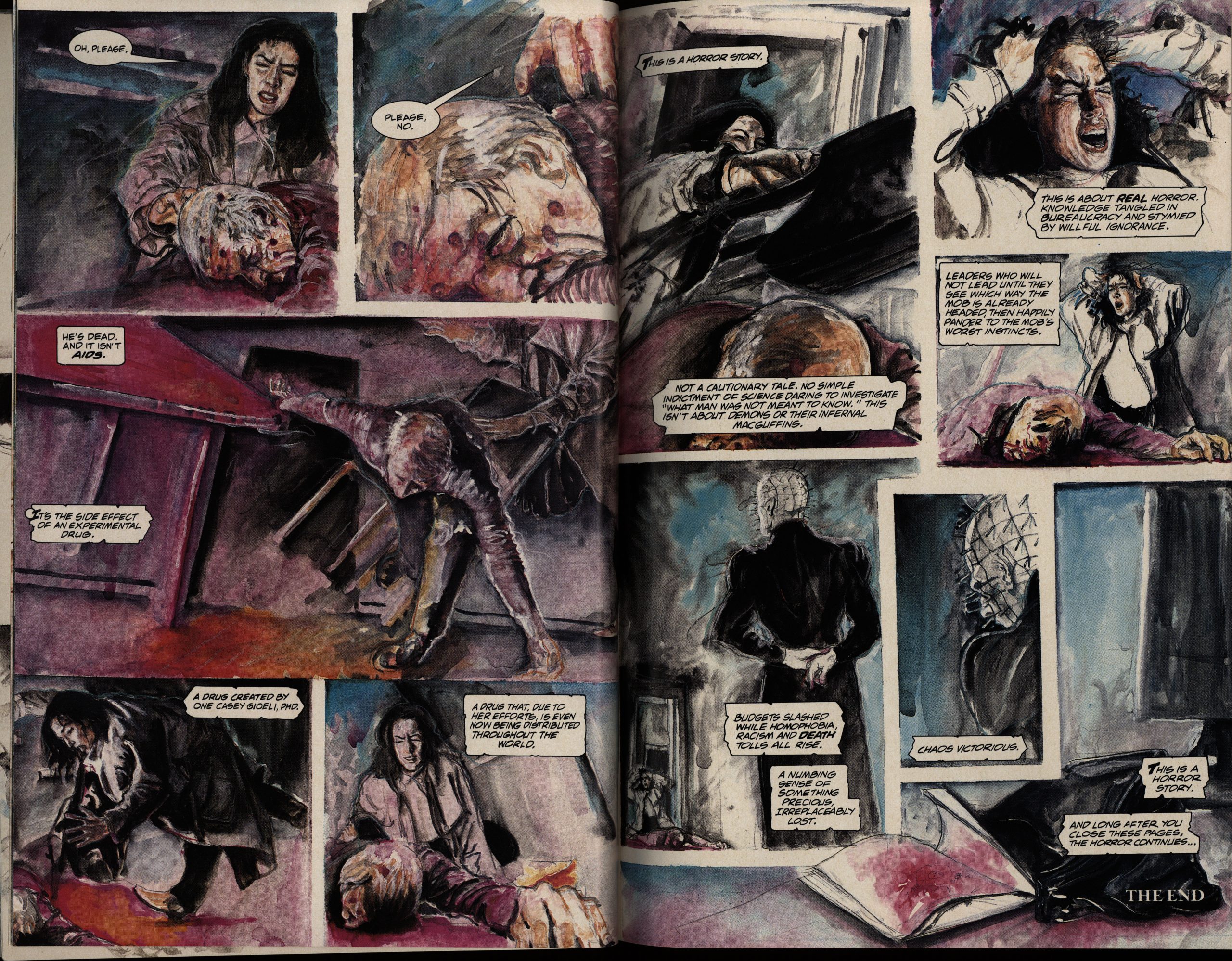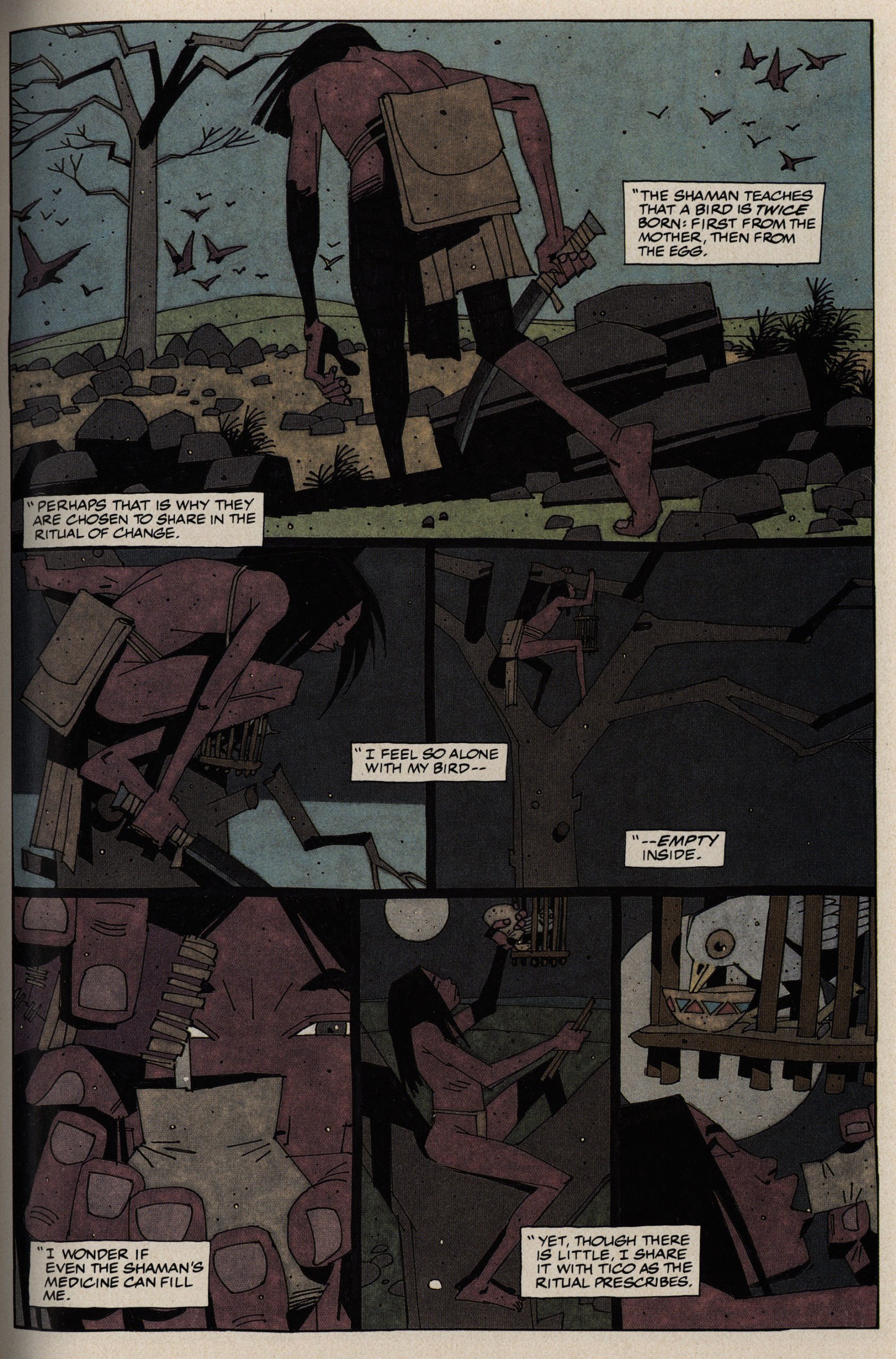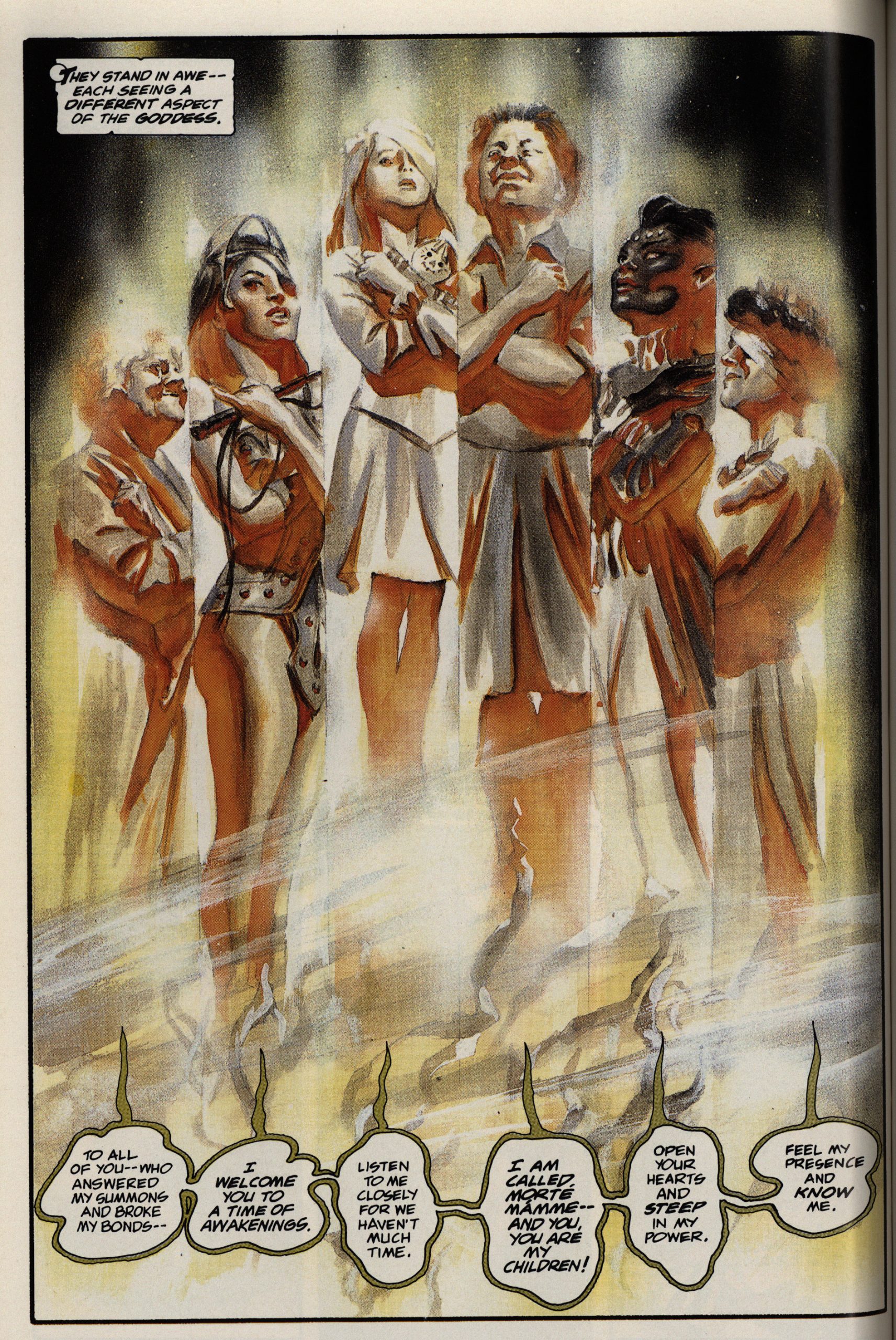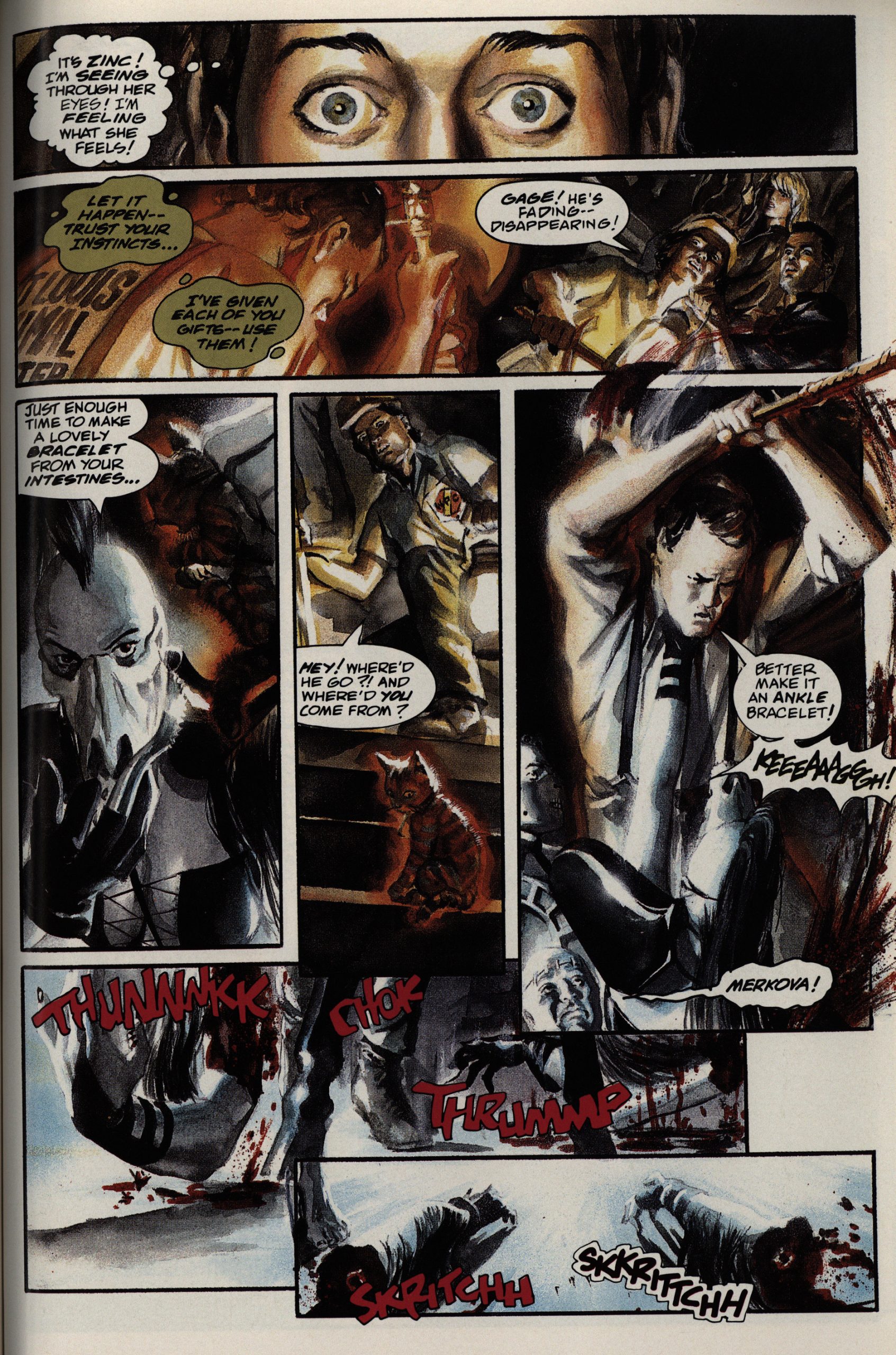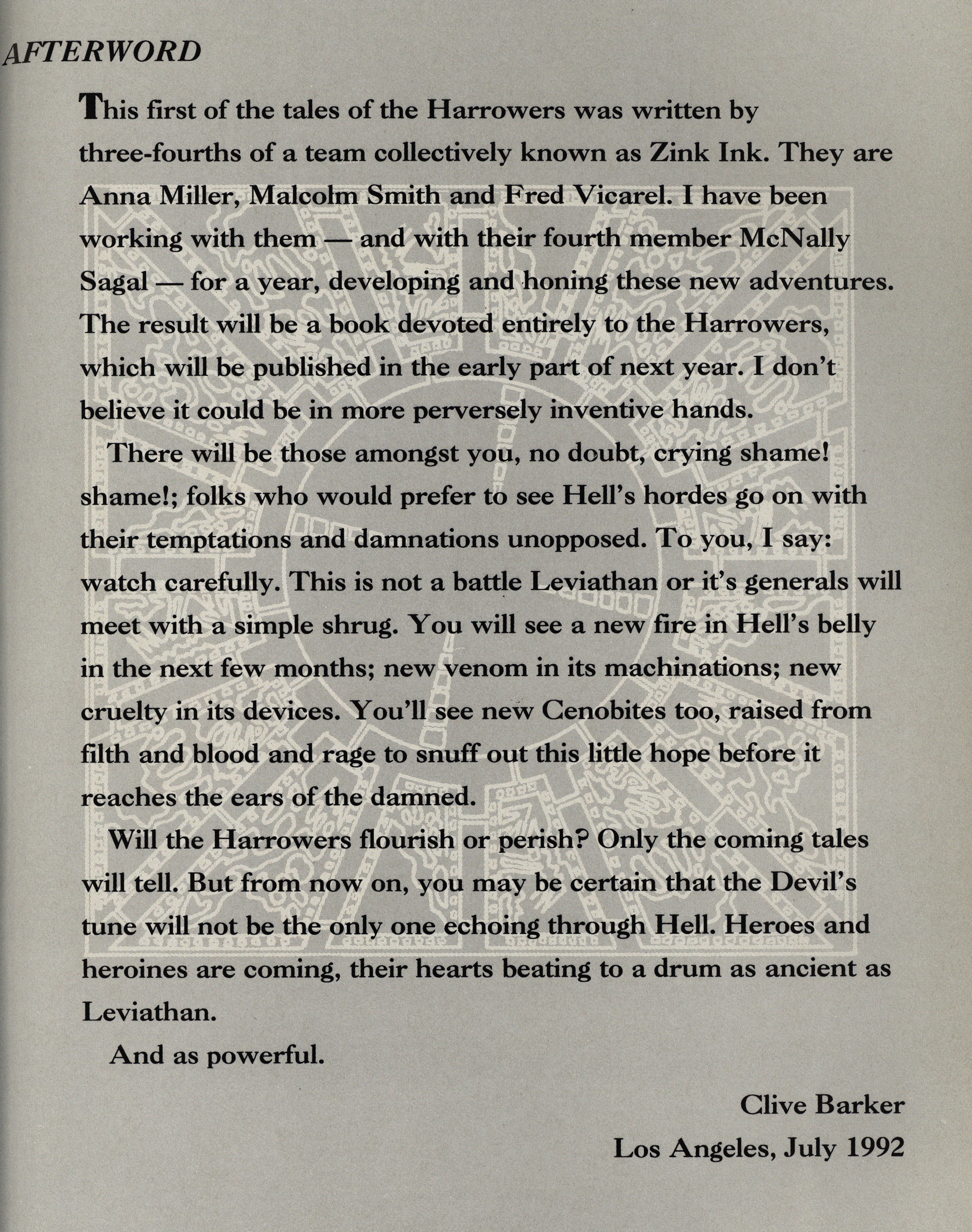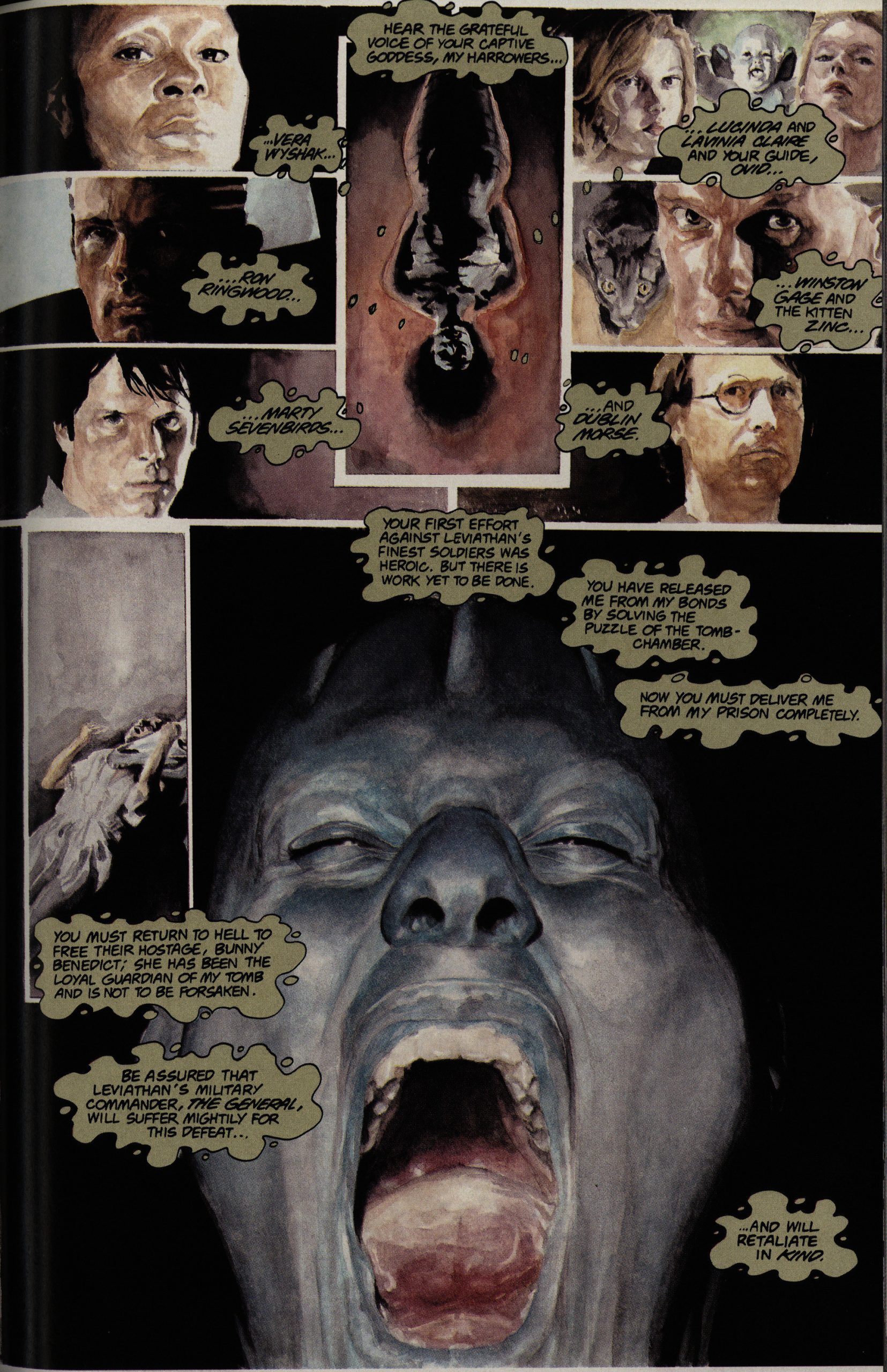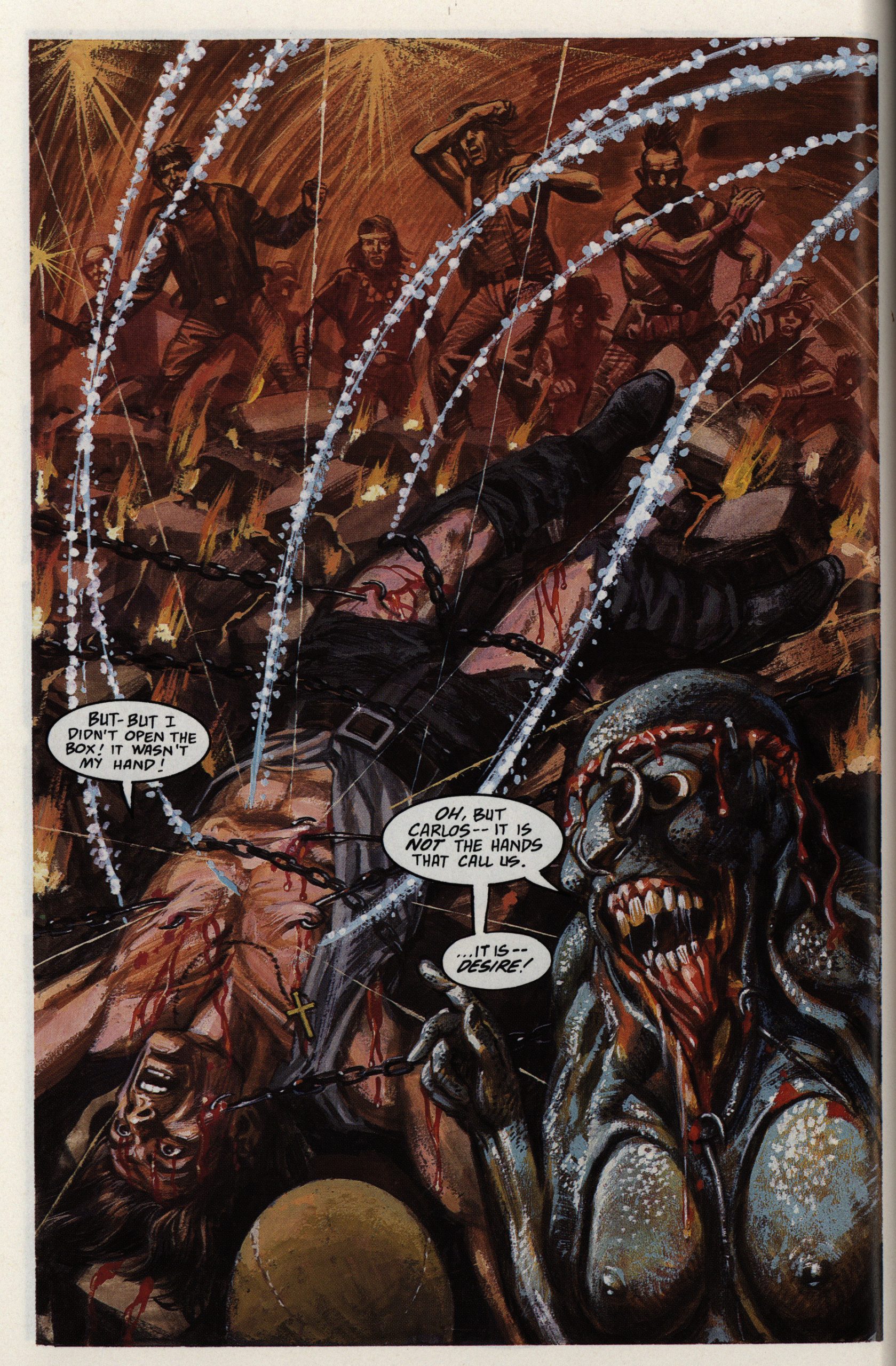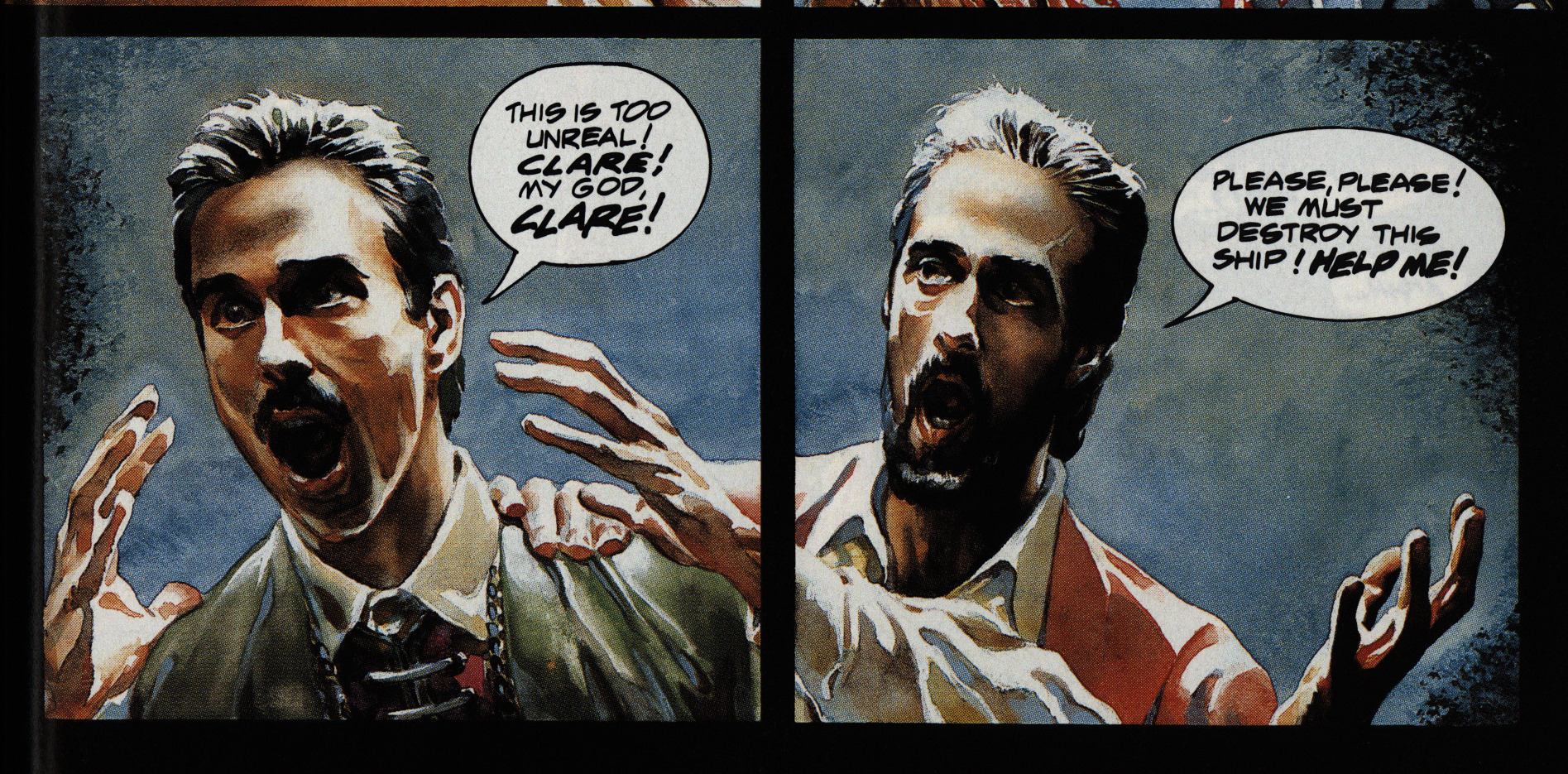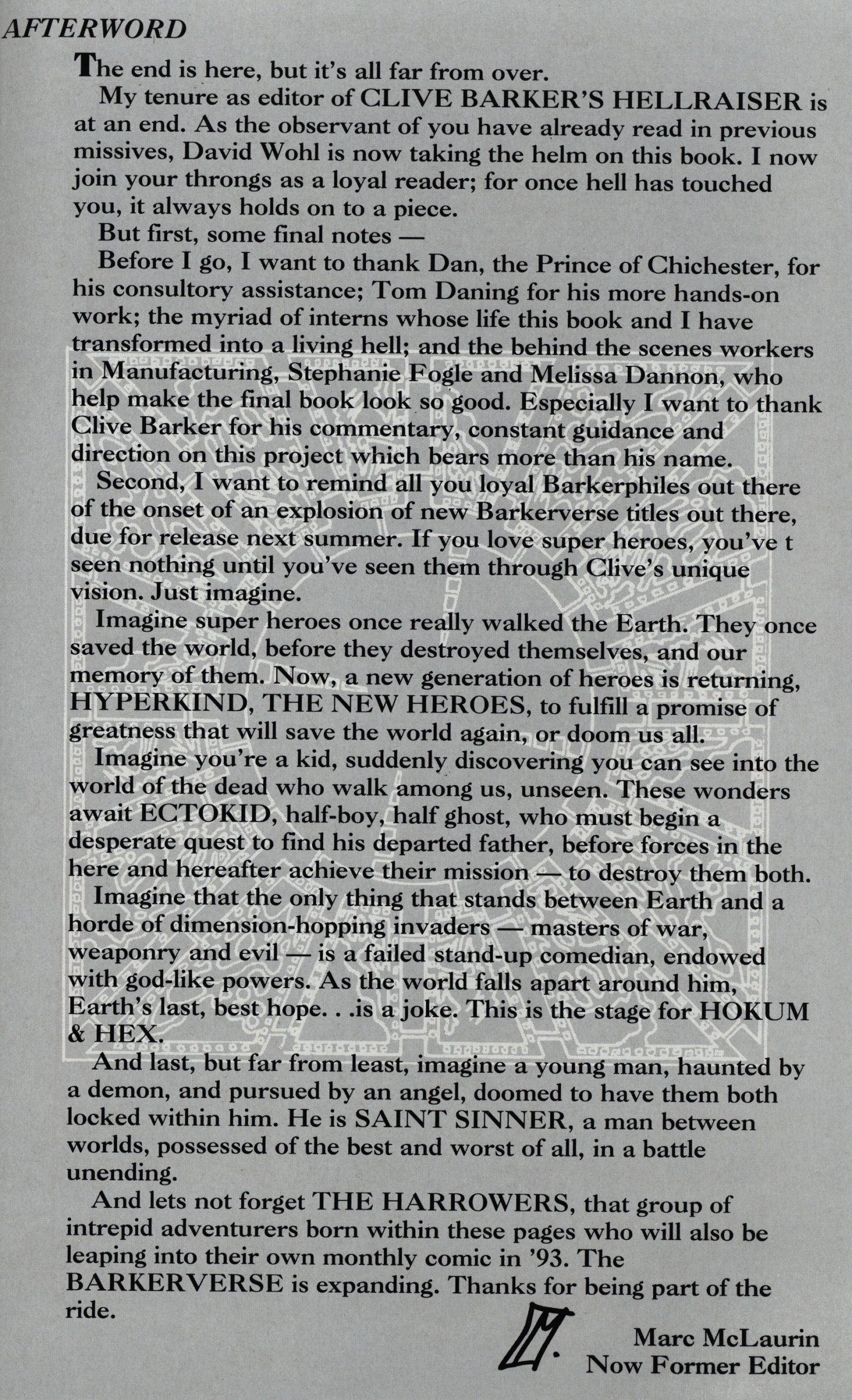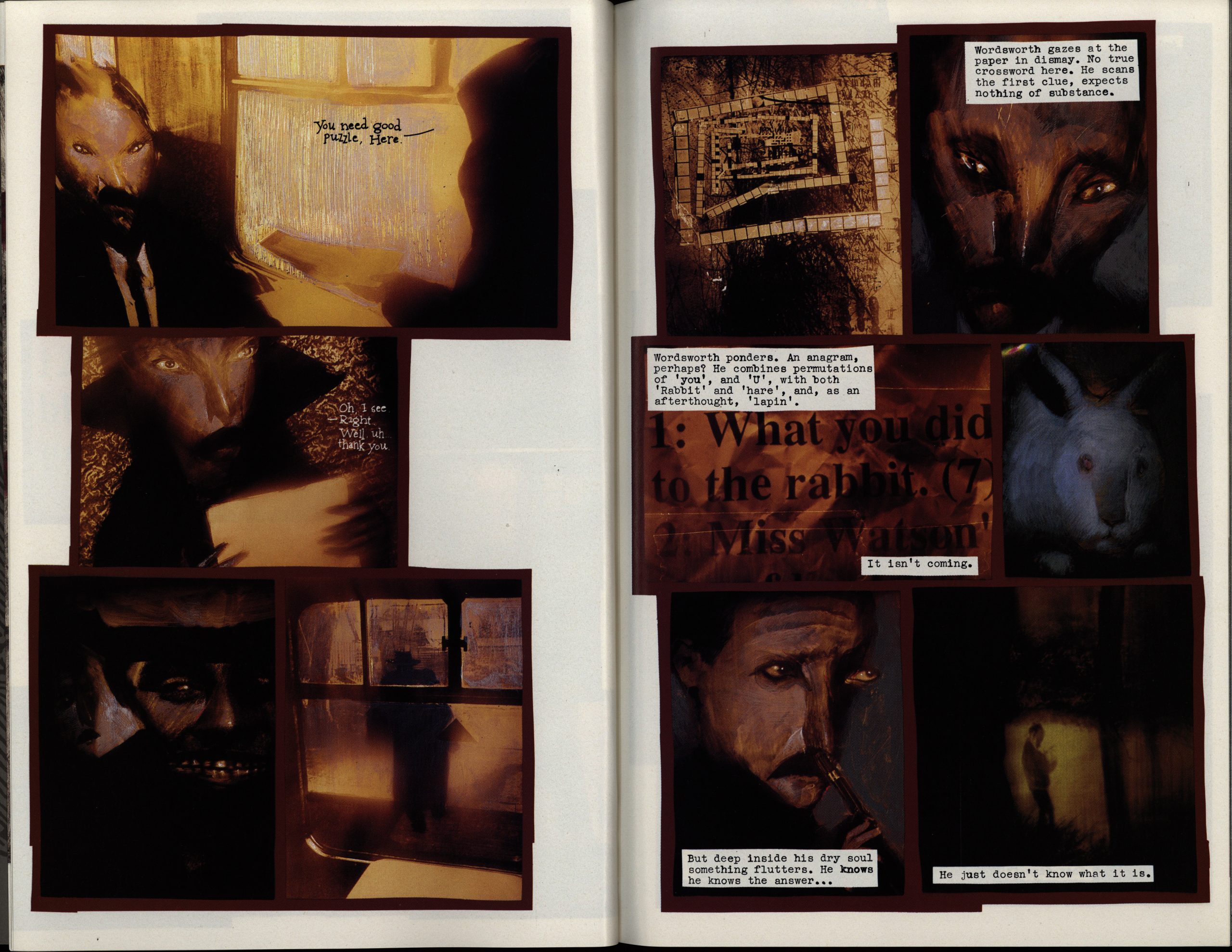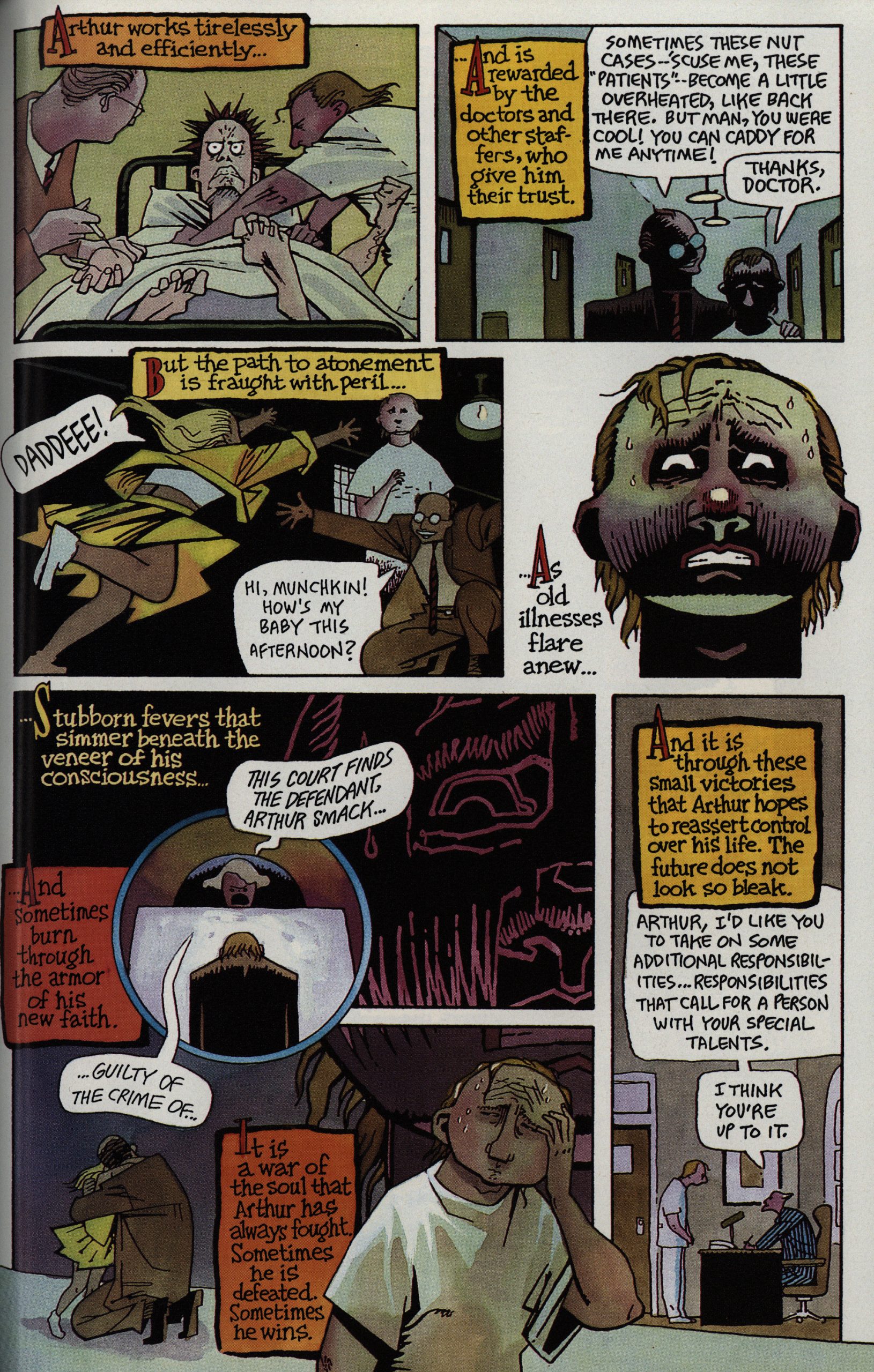Clive Barker’s Hellraiser (1989) #1-20
by a whole bunch of people, including a bunch of editors
I recently(ish) watched all of the Hellraiser movies. Yes, I know, but I wanted to, anyway.
Hellraiser (the first movie) had something going for it. It’s scary and it’s gruesome, yes, but it had two very striking things: The puzzle box and the Cenobites (and by that I mean Pinhead). The puzzle box in itself is just intrinsically scary, and the bondage gear monsters were just perfect for their time.
The problem came when they tried to make more movies. The second movie they basically just redid the first movie, so that was OK. And then… they had no idea where to go next, because the Hellraiser “mythos” doesn’t exist. It’s just a scary puzzle box and some bondage monsters.
I’m not ragging on Hellraiser; it’s an innovative and scary movie. But it’s based on a short story, and the first movie more than exhausted the source material. So what to do when trying to make a franchise out of it?
Associate/consulting editor DG Chichester (and the only editor associated with it throughout the run of this book, I think?) explains that they sat down with Barker and hammered out a bible. And then they’re giving that bible to a bunch of writers to see what they get back, and it sounds like the only edict they’re given is that there should be no “twist endings”, which has always been a staple of horror comics.
Chichester also says that after the foreword, “things are going to get horrible”, and the next thing after the foreword is the introduction by Barker. I assume that’s what he meant, and the idea that he’s referring to the comics hasn’t even occurred to me.
Eclipse Comics did a bunch of Barker things, starting a bit before Epic started their Barker things. However, Eclipse only (I think?) did adaptations, and only of the short stories from The Books of Blood. The Eclipse adaptations suffered from being way too respectful of the resource material, and sometimes read like illustrated books. Epic obviously doesn’t have this problem here, since they have almost no source material to work from.
Reading this first story in the first issue, my heart sank (and my stomach churned). It’s written by Erik Saltzgaber, one of the writers who attended the Barker Bible session, and it’s pure, unadulterated crap.
The illustrations by John Bolton are appropriately oldee-fashioned (even if they’re more Renaissance than medieval), looking like they’re painted on canvas and stuff, but the story is so stilted and convoluted that I’m at loss for words. (Yes, I know!) It’s got lots of grisly torture going on, so I was wondering whether this was going to be the standard: Just torture porn with boring, oh so boring, exposition around it?
But then we get a non-painted thing, with no torture, by Sholly Fisch and Dan Spiegle… with a twist ending. What?
And then we get some torture from Jan Strnad, Bernie Wrightson, Bill Wray and Michael Heisler…
And finishing out with an appropriately weird thing from Ted McKeever, where… the cenobite… spares a fetus?
Well, I didn’t know what to expect, but it wasn’t this. But perhaps I shouldn’t have been surprised, because what are you going to do with a concept like Hellraiser (which is just a box and some bondage monsters) in a shorts context? If you’re doing 10-15 pages in a comic called “Hellraiser”, and you’re not allowed to do twist endings, then the easiest thing is to just introduce a character, open the gates to hell, and then put in a page of two of torture.
Some of the artists are pretty accomplished, of course, but I wonder where they got these writers from. This thing written by Mark McLaurin is (in addition to being boring) somewhat impenetrable. Hm… oh, right, he’s a Marvel managing editor.
One temptation (that many of the writers succumbed to) is fill up a lot of the pages with exposition about the puzzle box. Which is understandable, because there’s not a lot else to talk about, but presumably anybody buying a Hellraiser book knows more about the puzzle box than anybody should, really, so it’s a waste of time.
Bill Koeb’s artwork’s nice, though.
The preference is for fully-painted artwork, but here we get pen-and-ink by Steve Buccellato and Stan Drake, of all people! Stan Drake! On a body horror book!
Between the stories, we get these incidental illustrations. Bill Sienkiewicz doesn’t go too gruesome…
In fact, after the first couple of issues, the grisliness is dialled back. A lot. Either the new editor, Margaret Clarke, just thought it was too much, or the writers realised that “exposition + torture” didn’t make for much fun if repeated four times per issue.
The reproduction on these issues is great. It’s 64 shiny pages per issue, and they do look fabulous.
John Ridgway illustrates this RJM Lofficier story, and it looks great and totally breaks with the formula, in that it’s an actual story. It is, perhaps, more of a Lovecraft story than anything else, but it’s very readable, which makes a change.
The artwork on this series is quite varied, but a recurring theme is (over) reliance on models. John Van Vleet takes it to an extreme by just vaguely drawing something over pictures of people (I think). But if these are Fumetti, they’re pretty well-staged Fumetti.
Half the Hampton family gets in on this story, which has no viscera at all. Just people getting lost in corridors. Which can be scary, but seems a little off brand. (It’s pretty effectively told, though.)
Sometimes it does seem like the only qualification artists need here is “do you have a brush?” Mike Hoffman has apparently never seen a fireman or a helmet before (that’s what they’re supposed to be).
One odd thing about this anthology (that employs so many strong artists) is that they’re always paired up with a writer, even if they could probably do a good job themselves. I mean, this is Colleen Doran, who I’d be more interested in in seeing do a take on Hellraiser herself.
Most of the artists opt to go very dark and stay away from yellows and oranges, which is what made this story, illustrated by SMS (I have no idea) all the more shocking.
Most of the incidentals are slightly arty takes on Cenobites. This is more fun. (It might be by Jorge Zaffino; it’s a bit unclear.)
Barker has a bunch of gay characters in his short stories, so it’d be natural to have that in this series, too. But there aren’t: John Robert Smith (with Jamie Tolagson) is one of the very few. (Don’t worry, they come to a grisly ending, like most of the people in these stories.)
Sometimes the artwork’s so interesting to look at that it doesn’t matter that the story… doesn’t exist. Joe Barruso here.
Bill Mumy and Miguel Ferrer (aren’t those two actors?) wrote this Bill Wray-illustrated twist story, and it’s very off model indeed. (The guy who manhandles the horsies gets his comeuppance… FROM HORSES.)
Consulting editor Chichester seems to acknowledge that Hellraiser hasn’t turned out like planned (“freewheeling and separate qualities”), and seems to imply that they’re now going to be cracking the whip and getting things back to a more Hellraiser-centred approach. To help with that, they’re… starting a serial?
Which does make a lot of sense. In these short stories by different people, there’s a natural stasis: There’s no character development possible, really. Having a serial to tie things together seems like a good idea, especially since Hellraiser is now a bi-monthly instead of a quarterly.
So what do we get? A Chichester-written story (illustrated by Kyle Baker) about daycare in Hell.
I mean, it’s good: One of the better shorter pieces in the entire run, but it’s a humour piece, which I interpreted him to mean that they’d shy away from from now on. But perhaps he just meant that other people should avoid doing this sort of stuff — not himself.
OK, and now we’re onto the great and grand serial, cowritten by Chichester, and drawn by Paris Cullins. Reading this, I was just… horrified… and not in a good way. Is this what half of Hellraiser was going to be from now on? Pedestrian art and Cenobites shocked, shocked I tell you, by the sight of blood in hell?
And we get new Cenobites, this time designed in the US of A, like the horrifying… Fat Woman With Big Boobs… and… Rambo Man With Bad Hairdo…
That’s not all. We also get Old Librarian Woman With Glasses, Guy With Face and Generic Goth Woman.
Look at them. Just look at them. Be horrified. Be very horrified.
(All these characters are copyrighted by Marvel. I’m guessing they didn’t turn out to be a profit centre.)
At this point, you’ll be wondering whether Chichester was trying to do a parody of Hellraiser, or perhaps US culture. But no:
They’ve assembled this squad of super-heroes I mean Cenobites to… subvert? help? some humans to avoid the Earth getting too (or not enough) chaotic.
I could probably care less, but it’d be difficult.
But! Then it turns out that this serial isn’t all that serial. Each chapter is done by a different team, and sometimes the connection between them is nebulous indeed.
So you have things like this thing written by Larry Wachowski (later to be famous) and artwork by Joe Barruso, which is about the horror of apartheid. It seems the Cenobites are… for it? I’m not quite sure; it’s a bit vague. But it’s a pretty fresh and different thing to put into this anthology.
You’d think that one of the advantages of working from photo reference would be that you’d get proportions right, but here it looks like artist Miram Kim used a picture of a woman that was 5x as big as the boy.
It’s written by Wachowski, and he goes to sexual violence: The only one (so far) to do so. Which is, perhaps, slightly odd, since the Hellraiser movie does lean into that somewhat. But, on the other hand, that’s a good way to get people outraged in a way that just torture won’t.
There are no ads in Hellraiser. Except this one, which seems more like a public service announcement.
We’re in the 90s now, so we need special cover treatments. This artwork by Sienkiewicz seems to have two different layers of metallic ink over it, and it looks spectacular in person. But it probably comes off as just black on the scanner, I guess.
And then they cut the page count from 64 to 48 (and drop the price from $6 to $4.50).
My fears about the serial seem to be unfounded. They do manage to make more entertaining stories when there’s some continuity and they don’t have to reset all the time. And they’ve got artists like Mike McManon, and I find his work on this story to be quite striking. Very modern (which the omniscient narrator definitely isn’t).
The long serial does kinda work, in that it allows the writers to do something other than the obvious and have, like, a plot… And you can’t really complain when you get pages like this by Sam Kieth.
Or this one by Mike Mignola/Mark Nelson.
Wowsers! This is Colleen Doran? I would never have guessed. It looks like she sent her artwork through the Sienkiewiczeiser.
Bruce Jones makes an appearance, but as an artist, not as a writer. Which reminds me: There’s a bunch of memorable artists working on this anthology, but the writers are mostly unknowns, Marvel editors, or unknown Marvel editors. This may explain why so many of these stories go nowhere.
Back when this serial thing was started, Hellraiser was a 64 page anthology. It was projected that we’d get two chapters of the serial per issue, meaning that half of each issue with be the serial. But then they shrank Hellraiser, leaving less space for non-serial stuff. In a way, that perhaps works to the anthology’s advantage, but it does make it feel more like a series with a backup feature.
The artist above, Mike Vosburg, apparently didn’t get the note on Rambo Cenobite having his ammo belt going through his skin, or just found the thing too ludicrous (which it is), so he just skipped that bit.
Perhaps I should say something about the serial’s plot: The Hell’s boss assembled a Scooby Gang to bring more order to the Earth, because Hell is all about fascism and fascists like order. OK? So one Scooby brings an Endlösung to South Africa (under a different name), because that’s more order, and the guy above conspires to have the scientist up there find a cure for AIDS. Because AIDS is disorder. You may now think “er, uhm, what?”
And then he helps getting the cure shipped out to thousands of people (before FDA approval), and it turns out that it’s not good, so a bunch of people with AIDS then suddenly get another disease and die horribly.
At this point you’re going EXCUSE ME WHAT THE FUCK? as you should, but SPOILERS it turns out that Pinhead only did this so that we could have a twist ending where it’s then revealed that she’ll later develop a cure for AIDS that will work? And be FDA approved? So that AIDS will be eradicated and order will prevail?
Which again means: FASCISM WINS!
It is perhaps somewhat besides the point to complain that this is rather tasteless, because it’s Hellraiser, after all. But… the what-the-fuckery of this storyline (and a couple of the other two) is mind-boggling. And not in a good way.
So now what? The serial is over…
So they’ve apparently called Clive Barker and begged him to come up with some concept, any concept, that’ll somehow transform Hellraiser into something that somebody can actually produce stories for, because nothing they’ve tried so far has worked.
Above we see the first result: The very intriguing artwork above is by Mike McMahon, and the concept is called “The Harrowers”.
The concept: A gang of super-heroes that fight the Cenobites.
It is, perhaps, a concept so obvious that nobody at Marvel dared do it, and perhaps Barker just told them the concept as a joke to get them off his back? But perhaps not, because he also slightly fleshes out the Hellraiser mythology: Now Leviathan, the Hell’s boss, has a sister, and they’re in an eternal struggle etc etc you’ve read it all before.
A problem with these super-heroes is that they seem, indeed, very super; so super that they just slice the poor Cenobites up. At least that what I think is happening here: Action isn’t Alex Ross’ forte.
Barker tells us that there’s a four person team called Zink Ink. that he’s been working with (for a year?) that’s been developing the “Harrowers” concept. A series is to follow.
This was before Alex Ross was a name, right? It’s more deranged than his later work.
The non-Harrowers pieces in the anthology continue on with the “oops I solved the puzzle and now I’m being tortured” schtick.
OH NO.
Ray Lago paints nice, but his characters are only as convincing as his photo reference actors. That is, not.
Editor McLaurin announces that he’s quitting in issue 19, but that he’s launching an entire Barkerverse line of comics in addition to The Harrowers. Hyperkind, The New Heroes, Ectokid and Hokum & Hex are teased. I’ve never heard of them, so I assumed they never happened, but they did under the name “Razorline”. I assume this was because Marvel decided to close down the Epic line.
We only get a single issue from the new editor David Wohl before Hellraiser was cancelled, and… it’s the best issue in the series. Because he’s hired better creators. We get a Neil Gaiman/Dave McKean (!) story that’s moody and isn’t a total retread of all the Hellraiser staples.
And Del Stone Jr with Mark Hempel and Mark Wheatley write a story that’s really creepy.
We do not get any editorial in the final issue, so no hints to why the book was cancelled. Epic was shutting down in 1993 (when the final issue was published), so it might have been just that, or perhaps the market couldn’t bear a $5 anthology any more.
I was unable to find any reviews of Hellraiser from the early 90s, and as far as I can tell, there’s been no complete reprints of the series, but Boom did a twelve issue series and two trade paperbacks. I wonder how the licensing worked out, since Marvel claimed copyright on a bunch of the new Cenobites they introduced.
Grim…cold…and truly haunting.
The first issue was mostly some amazing horror comics, even if you aren’t fans of Hellraiser.
